| | | Yard : | CMN | | Type : | Motor yacht | | Guests : | 14 | | Crew : | 14 | | Cabins : | 7 | | Length : | 60 m / 196′11″ | | Beam : | 11.2 m / 36′9″ | | Draft : | 3.5 m / 11′6″ | | Year of build : | 2009 | | Classification : | Bureau Veritas | | Displacement : | Full displacement | | | | Brand : | Caterpillar | | Engine power : | 2200 hp | | Total power : | 4400 hp | | Maximum speed : | 18 knots | | Cruising speed : | 14 knots | | | | Gross tonage : | 1076 | | Hull : | Steel | | Superstructure : | Aluminium | | Decking : | Teak | | Decks : | 4 | | Interior designer : | Andrew Winch | | Exterior designer : | Andrew Winch | | | | Propulsion : | Twin screw | | Extras : | Jacuzzi | | Flag : | UK | Similar yachts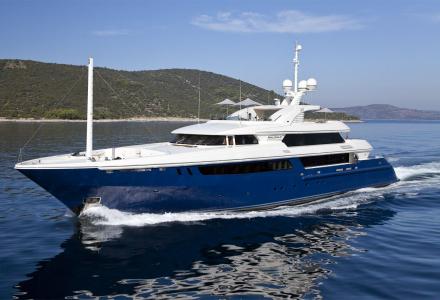 New listings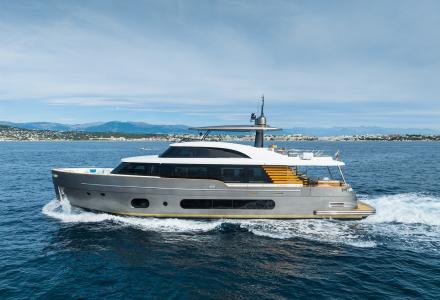  - Explore Our Yachts
- Newest Yachts for Yacht Charter
- Largest Yachts for Yacht Charter
- Destinations
- Special Events
 Explore the French Rivera in Contemporary Style VESSEL SPECIFICATIONS | NAME | ICE ANGEL | | PREVIOUS NAME | C9, CLOUD 9 | | BEAM | 11.2 (37′) | | DRAFT | 3.45 (11′) | | LENGTH | 60 (197′) | | CRUISING SPEED | 15 | | BUILT | 2009 | | REFIT YEAR | Never refit | | MANUFACTURER | CMN | | CREW | 15 | | GUESTS | 12 | | STATE ROOMS | 7 | | DESTINATIONS | | €315,000 / Per Week | TOYS AND TENDERSWaterski equipment 2 x 22' Nautica Express custom tenders fitted with composite teak decks Pro wakeboard and ski pole Castoldi jet tender 2 SeaDoo RTX 3-person waverunners 2 ClearBlueHawaii transparent kayaks Wakeboard equipment Beach volleyball Beach dining setup Kaleidescape Entertainment System throughout yacht TEMPORARILY WITHDRAWN FROM THE CHARTER MARKET. PLEASE CONTACT US FOR SIMILAR YACHTS FOR YOUR SUPERYACHT EXPERIENCE. PRESENTING ICE ANGELYacht ICE ANGEL is a magnificent super yacht designed equally for charter and the enjoyment of her owners. The classic blue hull and white superstructure of yacht ICE ANGEL set the scene for a truly nautical and contemporary superyacht. The interior of motor yacht ICE ANGEL is enriched with warm woods and subtle blue and cream tones combining natural materials and textures into a formal but relaxing environment. COMMUNICATIONS AND WATERTOYSWith all modern communications systems and a watertoys list to satisfy the most discerning Mediterranean yacht charter clients, this superyacht is a truly exciting edition to the luxury yacht charter market. ACCOMMODATES 12 GUESTSThis stunning five-deck yacht accommodates 12 guests. Her wide beam allows for a spacious interior. The wide beam, combined with four active stabilizers, creates a very comfortable yacht at sea. The design incorporates many impressive features such as the full-beam panoramic sky lounge and full beam Owner’s suite. The VIP suite boasts a private foredeck with sweeping ocean views. CMN LINE 60Launched at the CMN shipyard in France, this vessel is the third unit of the CMN Line 60, developed by the boatbuilder, in cooperation with Andrew Winch Designs. The superyacht shares the same hull lines as her sister ships Netanya 8 (not a charter yacht) and Slipstream , however, the yacht features a unique custom interior, as well as styling changes to the superstructure. HOW TO BOOK YOUR YACHT CHARTERIn conclusion, book motor yacht ICE ANGEL for your own private luxury yacht charter vacation today. Contact your yacht charter brokers at 1-800 Yacht Charters at 305-720-7245. If you prefer, complete our online inquiry form at https://1800yachtcharters.com/book-now/ . We will be in touch with you right away to plan The Superyacht Experience™ for you! Best Price GuaranteeWe will meet or beat all competitors' rates.  Learn More >> Photo GalleryUse the form below to search our site. If you have any questions at all, please contact us today. - Book Now / Contact Us
- Privacy Policy for Our Family of Companies
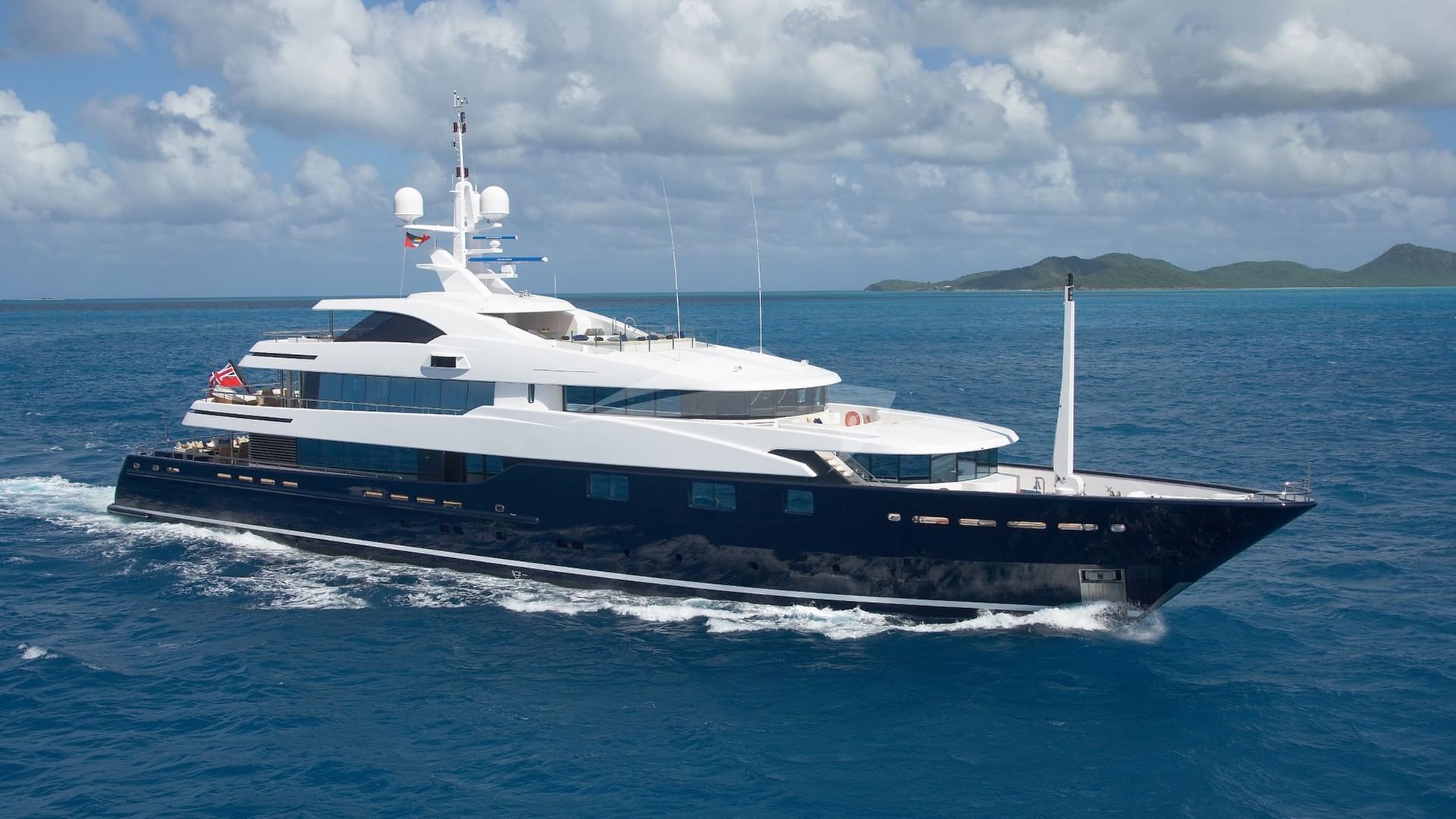 2009 CMN Yachts 197ft / 60mUnavailable  ICE ANGEL private yachtThe luxury motor yacht ICE ANGEL is a private yacht and is not available to charter. ICE ANGEL, previously named C9, was built by CMN Yachts and delivered to her owner in 2009. ICE ANGEL can accommodate 12 guests in 6 cabins consisting of a primary suite with a king size bed and en-suite bathroom facilities, a cabin with a double bed and en-suite bathroom facilities, a cabin with a twin bed and en-suite bathroom facilities, a cabin with 2 pullman beds and en-suite bathroom facilities and 2 cabins with a queen size bed and en-suite bathroom facilities. Amenities on board include Air Conditioning, Cinema, Exercise equipment, iPod dock, Jacuzzi on deck, Satellite TV, Stabilizers At Anchor, TV all cabins, TV saloon and Wi-Fi. An extensive list of further amenities and water toys can be seen under the features and amenities section. You can view alternative similar motor yachts for charter , or alternatively contact your Yacht Charter Broker for information about renting an alternative luxury charter yacht. West Mediterranean- Balearic Islands
- Corsica & Sardinia
- Sicily & Aeolian Islands
- Amalfi Coast
- French Riviera
- Air Conditioning
- Movie Theatre
- Exercise equipment
- Jacuzzi on deck
- Satellite TV
- Stabilizers At Anchor
- TV all cabins
- Jet Skis (standup)
- Paddleboards
- Tube - towable
- Water skis - adult
- Water slide
- Snorkeling Gear
- 23ft/7m Novurania 220hp
- 22ft/6.7m RIB 265hp
- Castoldi jet 125hp
Destinations Frequently Asked QuestionsHow much to charter ice angel. ICE ANGEL has a weekly charter price starting at €329,000 and an estimated daily charter price of €54,800. How many guests on board ICE ANGEL?ICE ANGEL can accommodate 12 sleeping guests on board in 6 cabins. Legal DisclaimerMotor Yacht ICE ANGEL is displayed on this page for informational purposes and may not necessarily be available for charter. The yacht details are displayed in good faith and whilst believed to be correct are not guaranteed, please check with your charter broker. Charter Index does not warrant or assume any legal liability or responsibility for the accuracy, completeness, or usefulness of any information or images displayed as they may not be current. All yacht details and charter pricing are subject to change without prior notice and are without warranty. U.S. Customs & Border ProtectionThe yachting industry has no global listing service to which all charter yachts must subscribe to, making it impossible to ascertain a truly up-to-date view of the market. Charter Index is a news and information service and not always informed when yachts leave the charter market, or when they are recently sold and renamed, it is not always clear if they are still for charter. Whilst we endeavour to maintain accurate information, the existence of a listing on Charter Index should in no way supersede official documentation supplied by the representatives of a yacht. Specification | Yacht name | ICE ANGEL | | Prior name | C9 |
|---|
| Speed (cruising) | 25.9kph / 14kn |
|---|
| Engine | 2x CAT 3516B at 2200hp each |
|---|
| Hull | Monohull |
|---|
| Flag | Isle of Man |
|---|
| Launched | 2009 |
|---|
| Builder | CMN Yachts |
|---|
| Designer | CMN |
|---|
Popular related yachtsEast mediterranean.  | Type | | | IMO | 9444572 | | MMSI | 235068579 | | Flag | | | Call Sign | 2BRA3 | | Size | 60 x 10 m | | GT | 1,093 | | DWT | 903 | | Build | 2009 | | Status | Active | | Owner | | Current TripPalma de mallorca.  | Trip Time | --- | | Trip Distance | --- | | AVG Speed | --- | | MAX Speed | --- | | Draught | --- | | AVG Wind | --- | | MAX Wind | --- | | MIN Temp | --- | | MAX Temp | --- | | Position Received | 2023-03-28 15:10 | Current Position | Longitude | 23.57540° | | Latitude | 37.96174° | | Status | Moored | | Speed | | | Course | 185° | | Area | Aegean Sea | | Station | T-AIS | | Position Received | 2023-03-28 15:10 |  InformationThe current position of ICE ANGEL is in Aegean Sea with coordinates 37.96174° / 23.57540° as reported on 2023-03-28 15:10 by AIS to our vessel tracker app. The vessel's current speed is 0 Knots and is currently inside the port of PERAMA . The vessel ICE ANGEL (IMO: 9444572, MMSI: 235068579) is a Yacht that was built in 2009 ( 15 years old ) . It's sailing under the flag of [GB] United Kingdom . In this page you can find informations about the vessels current position, last detected port calls, and current voyage information. If the vessels is not in coverage by AIS you will find the latest position. The current position of ICE ANGEL is detected by our AIS receivers and we are not responsible for the reliability of the data. The last position was recorded while the vessel was in Coverage by the Ais receivers of our vessel tracking app. The current draught of ICE ANGEL as reported by AIS is 3.5 meters | Temperature | 10°C / 50°F | | Wind Speed | 16 knots | | Direction | 12° NNE | | Pressure | 1011.3 hPa | | Humidity | 69.2 % | | Cloud Coverage | 19 % | Featured CompanyLast port calls. | Port | Arrival | Departure | Time In Port | Most Visited Ports (Last year) | Origin | Departure | Destination | Arrival | Distance | | Time | Event | Details | Position / Dest | Info | Please use a modern browser to view this website. Some elements might not work as expected when using Internet Explorer. - Landing Page
- Luxury Yacht Vacation Types
- Corporate Yacht Charter
- Tailor Made Vacations
- Luxury Exploration Vacations
- View All 3707
- Motor Yachts
- Sailing Yachts
- Classic Yachts
- Catamaran Yachts
- Filter By Destination
- More Filters
- Latest Reviews
- Charter Special Offers
- Destination Guides
- Inspiration & Features
- Mediterranean Charter Yachts
- France Charter Yachts
- Italy Charter Yachts
- Croatia Charter Yachts
- Greece Charter Yachts
- Turkey Charter Yachts
- Bahamas Charter Yachts
- Caribbean Charter Yachts
- Australia Charter Yachts
- Thailand Charter Yachts
- Dubai Charter Yachts
- Destination News
- New To Fleet
- Charter Fleet Updates
- Special Offers
- Industry News
- Yacht Shows
- Corporate Charter
- Finding a Yacht Broker
- Charter Preferences
- Questions & Answers
- Add my yacht
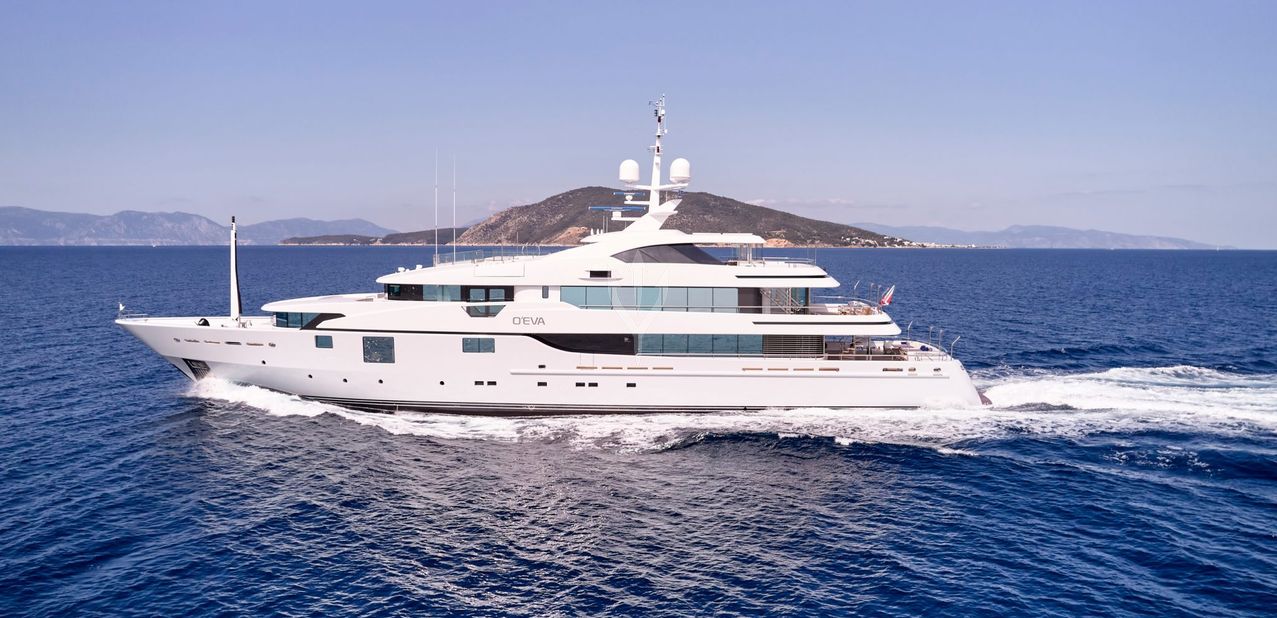 View More Photos - Luxury Charter Yachts
- Motor Yachts for Charter
- Amenities & Toys
- Rates & Regions
- + Shortlist
O'EVA YACHT CHARTER60m / 196'10 cmn yachts 2009 / 2023. Cabin Configuration Special Features: - Large outdoor spaces
- Elegant & contemporary interior
- Tried and tested world cruiser
- Deeper than usual hull
- Zero speed stabilisers
- Dramatic central spiral staircase
Superyacht 'O'Eva' is extremely smooth and quiet motor yacht underway and has a proven charter track record. The 60m/196'10" 'O'Eva' motor yacht built by the French shipyard CMN Yachts is available for charter for up to 12 guests in 8 cabins. This multi-award winning yacht features interior styling by British designer Winch Design. From bow to stern, O'Eva is brimming with an fantastic array of social and dining areas, both inside and out, making her the ideal yacht for relaxing and entertaining whilst on charter. She has sensational features such as a movie theatre, underwater lights and gym. Interior DesignAn impressive 500m2 of light, open living space is spread over five decks and each deck is linked by a dramatic central spiral staircase which wraps around a spectacular glass sculpture. A wealth of different materials creates a beautiful palette of texture, from polished Marron Imperial marble and burled plane wood, to woven leather panelling. The attention to detail throughout the yacht is exceptional. Even the detailing in the carpets underfoot echoes the architectural shapes overhead. Guest AccommodationO'Eva is great for families thanks to her child-friendly setup. Built in 2009, She offers guest accommodation for up to 12 guests with a layout comprising a master suite, one VIP cabin, three double cabins and one twin cabin. There are 10 beds in total, including 1 king, 2 queen, 1 double, 2 singles and 2 pullmans. She is also capable of carrying up to 15 crew onboard to ensure a relaxed luxury yacht charter experience. Onboard Comfort & EntertainmentA charter on O'Eva is comfortable and convenient thanks to the provided amenities, notably a state-of-the-art movie theatre for movie nights. A gym with all the latest equipment is available for a good work out and in addition soak up the bubbles in style in the deck jacuzzi. Whatever your activities on your charter, you'll find some impressive features are seamlessly integrated to help you, notably satellite communications, keeping you connected on any voyage. Soak up the atmosphere after dark with dramatic underwater lights and in addition whether you want to work, use social media or stream movies on board this yacht, you can with Wi-Fi connectivity. You can stay comfortable on board whatever the weather, with air conditioning during your charter. Performance & RangeO'Eva is built with a steel hull and aluminium superstructure. Powered by twin Caterpillar engines, she comfortably cruises at 15 knots, reaches a maximum speed of 17 knots with a range of up to 5,000 nautical miles from her 130,000 litre fuel tanks at 12 knots. O'Eva features at-anchor stabilizers providing exceptional comfort levels. O'Eva has aboard a plentiful range of water toys and accessories ready to entertain you and your guests whilst on charter. Take to the sea on a Jet Ski offering you power and control on the water. Also there are towable toys offering fun and adventure. In addition there are waterskis that are hugely entertaining whether you are a beginner or a seasoned pro. If that isn't enough O'Eva also features a seabob, wakeboards, kayaks, inflatable water toys and kneeboards. O'Eva features three tenders, but leading the pack is a 7m/23' Novurania Chase Tender to transport you in style. Book your next the Mediterranean luxury yacht charter aboard O'Eva this summer. She is already accepting bookings this winter for cruising in the Caribbean and the Mediterranean. Luxury motor yacht O'Eva is one of a kind, offering world-class onboard amenities coupled with an overflowing toy box full of the latest water sports gear for unforgettable yacht charters wherever you are. TESTIMONIALS There are currently no testimonials for O'Eva, please provide . O'Eva Photos 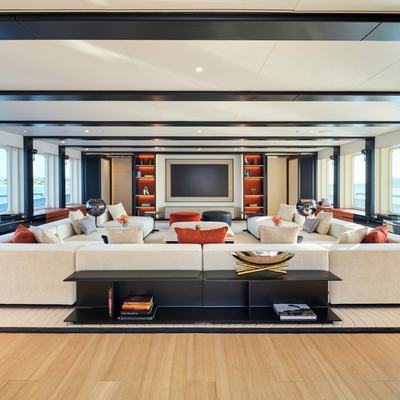 | Length | 60m / 196'10 | | Beam | 11.1m / 36'5 | | Draft | 3.45m / 11'4 | | Gross Tonnage | 1,076 GT | | Cruising Speed | 15 Knots | | Built | | (Refitted) | | Builder | CMN Yachts | | Model | Custom | | Exterior Designer | Winch Design | | Interior Design | Winch Design | Amenities & Entertainment For your relaxation and entertainment O'Eva has the following facilities, for more details please speak to your yacht charter broker. O'Eva is reported to be available to Charter with the following recreation facilities: - 1 x 7m / 23' Novurania Chase Tender FNM 270 HP engine
- 1 x 4.15m / 13'7 Williams Jet Tenders Yanmar 100 HP engine
- 1 x Zodiac 450 EC Neo Rescue Boat Yamaha 40 HP engine
For a full list of all available amenities & entertainment facilities, or price to hire additional equipment please contact your broker. O'Eva Awards & Nominations - The World Superyacht Awards 2010 Best Displacement Motor Yacht of 500GT to 1,299GT (approximately 50m – 59m) Finalist
- The ShowBoats Design Awards 2010 Exterior Design & Styling Award: Displacement Motor Yachts 100′-199′ Winner
- The ShowBoats Design Awards 2010 Recreational Area for Guest Use Award Winner
- The International Yacht & Aviation Awards 2024 Refit Nomination
- The International Yacht & Aviation Awards 2024 Main Salon Nomination
- + shortlist
For a full list of all available amenities & entertainment facilities, or price to hire additional equipment please contact your broker. APPROVED RYA WATER SPORTS CENTRE Your family and friends could learn to use the water toys on your charter vacation onboard this luxury charter yacht. Motor Yacht O'Eva is a certified RYA Training Centre yacht. 'O'Eva' Charter Rates & Destinations 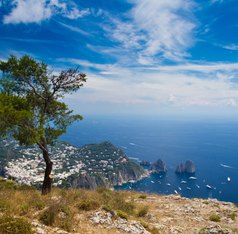 Summer Season May - September €280,000 p/week + expenses Approx $300,000 High Season €340,000 p/week + expenses Approx $364,500 Cruising Regions Mediterranean Croatia, France, Greece, Italy, Malta, Monaco, Montenegro, Turkey HOT SPOTS: Amalfi Coast, Calvi, Corsica, French Riviera, Mykonos, Sardinia 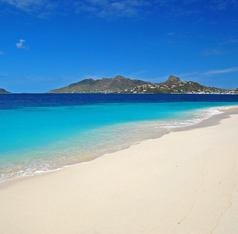 Winter Season October - April Caribbean Antigua, Saint Martin, St Barts Mediterranean Croatia, France, Greece, Italy, Malta, Monaco, Montenegro, Turkey Charter O'Eva To charter this luxury yacht contact your charter broker , or we can help you. To charter this luxury yacht contact your charter broker or On Board Review Delivered in 2009, the award-winning 60m (197ft) superyacht O’EVA made her charter debut at the Mediterranean Yacht Show 2023, where she wowed brokers and other industry professionals with her stunning new makeover. Luxury adventures await on board the award-winning superyacht O’EVA Read Review  Update your yacht Yacht Owner, Captain or Central Agents - Send us latest Photos, Charter Rates or Corrections Send Updates SIMILAR YACHTS FOR CHARTER Aqua Mekong62m | Saigon Shipyard Co Ltd from $358,000 p/week  59m | Benetti from $311,000 p/week ♦︎ 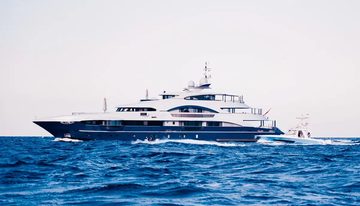 55m | Heesen from $350,000 p/week  66m | Oceanco from $556,000 p/week ♦︎ 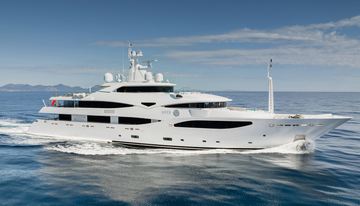 from $378,000 p/week  from $395,000 p/week  61m | Abeking & Rasmussen from $650,000 p/week  58m | Turquoise Yachts from $358,000 p/week ♦︎ * 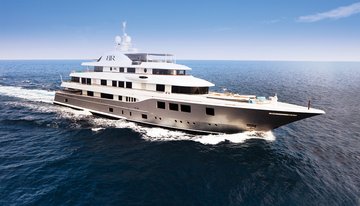 Baton Rouge63m | Icon Yachts from $467,000 p/week ♦︎ 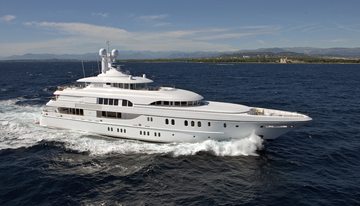 60m | Lurssen from $550,000 p/week 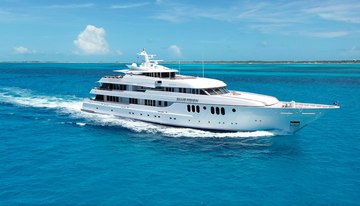 60m | Feadship NOTE to U.S. Customs & Border Protection Specification SEASONAL CHARTER RATES - Share on Facebook
- Share Yacht
SIMILAR LUXURY CHARTER YACHTSHere are a selection of yachts which are similar to the current charter yacht. To view all similar luxury charter yachts click on the button below. As Featured In The YachtCharterFleet Difference YachtCharterFleet makes it easy to find the yacht charter vacation that is right for you. We combine thousands of yacht listings with local destination information, sample itineraries and experiences to deliver the world's most comprehensive yacht charter website. San Francisco- Like us on Facebook
- Follow us on Twitter
- Follow us on Instagram
- Find us on LinkedIn
- Add My Yacht
- Affiliates & Partners
Popular Destinations & Events - St Tropez Yacht Charter
- Monaco Yacht Charter
- St Barts Yacht Charter
- Greece Yacht Charter
- Mykonos Yacht Charter
- Caribbean Yacht Charter
Featured Charter Yachts - Maltese Falcon Yacht Charter
- Wheels Yacht Charter
- Victorious Yacht Charter
- Andrea Yacht Charter
- Titania Yacht Charter
- Ahpo Yacht Charter
Receive our latest offers, trends and stories direct to your inbox. Please enter a valid e-mail. Thanks for subscribing. Search for Yachts, Destinations, Events, News... everything related to Luxury Yachts for Charter. Yachts in your shortlist VLADIMIR, SUZDAL AND THE GOLDEN RINGGolden ring. Golden Ring is the modern name given to a series of magnificent villages and towns that are situated in a circle northeast of Moscow. Founded before Moscow in the 7th century to 12th century, these places form the heartland of Russia and are known for the churches (some with golden domes), monasteries, wooden kremlin (city forts), museums and brightly-painted, northern-style wooden houses with carved doorways and windows. Many of the towns are situated on the Volga and its tributaries. The picturesque old towns are dominated by multi-spired onion domed churches. Some of the bulbous, tear drop domes are gold. Others are made of wood. While others still are navy blue with gold stars. Within their walls are masterpieces of icon painting and treasures, with a few arrangements dating back to the 12th and 13th centuries. These architectural masterpieces bear witness to the creative genius of Old Russia craftsmen and provide a link between the Byzantine architecture that characterized early Kiev and the -Orthodox style represented by St Basil's cathedral and the building in the Kremlin in Moscow. The most treasured buildings have been painstakingly preserved and restored. Old crafts, such as icon making, box painting and glassmaking, are still practiced If you are interested in seeing Russia at it onion-domed best in a quaint rural setting with out the crowds, hardships and bustling pace of the big cities, the Golden Ring area is a good place to explore. The countryside around the towns is very nice and can be enjoyed from a train, bus or boat. Early History of Vladimir, Suzdal and the Golden Ring AreaThe towns in the golden ring began as northern outposts of the Kievan Rus state. They are considered the heartland of Russia because they preceded Moscow and followed Kiev, which is where Russian-Orthodox culture began, in present-day Ukraine. The main towns of the Golden Ring — Vladimir and Suzdal — gained in importance in the 11th century as Kiev declined. In the 12th century the princes of Kiev moved to Suzdal and then Vladimir which became the effective capital of Russia in 1169. The princes of the region prospered under Mongol rule and maintained a grip on Russia until Moscow rose in power and became the effective capital of Russia when the headquarters of the Russian Orthodox church was established there in the 1320s. The northern Rus principalities began displaying their independence from in the middle of the 11th century. As this happened the political center of the eastern Slavs moved from present-day Ukraine to what is now Russia. The merchants of Novgorod began trading with the Hanseatic League, based on the Baltic and North Sea. Around the same the principality of Vladimir, near Moscow, began gaining strength. Historians sometimes refer to the change as transformation from "Little" to "Great" Russia In the northeast, East Slavs colonized the territory that eventually became Muscovy by intermingling with the Finno-Ugric tribes already occupying the area. The city of Rostov was the oldest center of the northeast, but it was supplanted first by Suzdal' and then by the city of Vladimir. By the twelfth century, the combined principality of Vladimir-Suzdal' had become a major power in Kievan Rus'. Andrew Bogolubsku (ruled 1157-63), a Vladimir prince, sacked Kiev in 1169 and moved the Russian court to Vladimir (the headquarters of the Russia church remained in Kiev until 1300). Bogolubsku began a line known as the Grand Dukes of Vladimir, which were followed by the Grand Dukes of Muscovy. These were all related to the Rurik line and Grand Dukes of Kiev. Moscow was founded in 1147 by Prince Yuri of Suzdal, who conquered the towns of Vladimir and Suzdal, battled other Russian princes for the throne of Kiev and claimed the land around present-day Moscow from a nobleman who offended him and was ordered killed. Prince Yuri was nicknamed "Dolgoruky," which means "low-handed." The area around the Kremlin had been settled a couple hundred years before prince Yuri arrived and was site of the nobleman's estate when the city was founded. At the time Moscow was founded Kiev was the center of Russian culture. As time went on Moscow grew in importance and Kiev declined. Cruising the Golden RingMany Western travelers that visit the area cruise the canals, lakes and rivers on 300-passenger Russian vacation ship that are virtually floating hotels, complete with restaurants, cabins and a music salon where classical musicians perform every night. The journeys begin and end in St. Petersburg and Moscow so you will have a chance these cities as well. Tour groups in the United States that offer cruises on the Golden Ring include Russian River Cruises and Viking River Cruises. Volga-Baltic Waterway connects the Baltic Sea with the Volga River through a series the rivers, lakes and canals. Along the shores are small farms, rolling green hills, old villages and birch forests. Both Peter the Great and Stalin had hope to complete a Volga-Baltic water but that goal was not realized until the summer of 1964, when the last link of Baltic to Volga waterway — a waterway stretching from Lake Onega to the Rybinsk Reservoir — was completed. Linking the major cities of European Russia and sometimes called the "Path of God," the 1,100-mile waterway includes dams, locks, canals, reservoirs and the rivers Vytegra, Kovzha, the Beloye Lake and the Sheksna River. River cruise ships ply the waterway from May to September. Belomorsko-Baltiyskiy Canal in Russia is the world's longest modern canal. extending from Belomorsk to Povenets, it is 226 kilometers (141 miles) long and has 19 locks. Vladimir OblastVladimir Oblast is where most of the Golden Ring sights are. It is the birthplace of Russian statehood and a real treasure trove for people interested in Russian Orthodox culture. This region contains iconic places where Russia's history was made. The famous Golden Gate of Vladimir, the Church of the Intercession on the Nerl, and the white-stone Saint George Cathedral in Yuryev-Polsky can all still be seen today. [Source: Russian Tourism Official Website] Vladimir Oblast played a central role in the development of Russia’s its culture, language, and traditions. The Vladimir-Suzdal Principality was a forerunner of the Russian state. Millions of people come here to touch the history of the country. Vladimir is 180 kilometers from Moscow, 225 kilometers from Nizhny Novgorod, 170 kilometers from Ryazan and 100 kilometers from Ivanovo. The city of Alexandria is the “capital of the 101st kilometer”. Vladimir and and Suzdal are the main attractions. According to UNESCO: “These two artistic centres in central Russia hold an important place in the country's architectural history. There are a number of magnificent 12th- and 13th-century public and religious buildings, above all the masterpieces of the Collegiate Church of St Demetrios and the Cathedral of the Assumption of the Virgin.” But there are other places too. In recent years, the previously closed city of Murom has been actively developing tourism. Alexandria and Yuryev-Polsky are also doing all they can to attract tourists. There are also many active Orthodox shrines in the region. Many of the tourists from Russia and the former Soviet Union in the region are pilgrims visiting these shrines. White Monuments of Vladimir and Suzdal: UNESCO World Heritage SiteWhite Monuments of Vladimir and Suzdal were inscribed as a UNESCO World Heritage Site in 1992. According to UNESCO: “The ancient towns of Vladimir and Suzdal, the main towns of the ancient Russian principality in the 12th-13th centuries, are located in the centre of the European part of Russia, some 200 kilometers east of Moscow, 30 kilometers from each other. At this time, the towns developed their individual architecture and art school. These white-stone monuments are unique architectural creations, and part of the Russian treasure-house of culture. [Source: UNESCO] “The World Heritage property “White Monuments of Vladimir and Suzdal” is a serial property, made up monuments in Vladimir, Suzdal and Kideksha, five kilometers to the east of Suzdal. In Vladimir are found the Cathedral of the Assumption, the Golden Gate, the Cathedral of the Nativity of the Virgin and the Staircase Tower of the Palace of Andrei Bogulyubsky in the Prince Castle in Bogulyubuvo, and the Church of the Intercession on River Nerl; the Kremlin and Cathedral of the Nativity and the Monastery of Our Saviour and St Euthymius are in Suzdal; and the Church of St Boris and St Gleb stands in Kideksha. “The architecture of Vladimir-Suzdal is characterized by stonework faced in regular blocks of white limestone, refined proportions, fine stone carving, apparent lightness of buildings, and the skill of the ancient church architects in harmonizing their buildings with the surrounding natural landscape. The monuments are unique in view of their age, authenticity of architectural form, and historic links with the founders of the Russian statehood, such as Yuriy Dolgorukiy (Yuriy Long Hands), Andrey Bogolubskiy (Andrey of Bogolubovo), Vsevolod Bolshoe Gnezdo (Vsevolod the Large Nest) and Georgiy Vsevolodovich.” The White Monuments of Vladimir and Suzdal are important because: 1) they “are outstanding examples of ancient Russian architecture. These white-stone structures are a unique phenomenon, incorporating the best work of creative master-minds and presenting an amazing synthesis of architecture and monumental art.” 2) They are “The white-stone monuments and ensembles of the Vladimir and Suzdal school of architecture are outstanding examples of architectural art and perfect models of technical and construction skill, fully harmonized with the surrounding landscape. They exemplify the beginnings and the peak of the white-stone building style of the 12th-13th centuries, and are remarkable for a prominent harmony and perfection of architectural shapes.” 3) They are “an outstanding example of the development and perfection of architectural shapes and white-stone building techniques which formed a unique school of architecture. This influential style began and achieved its greatest expression here and illustrates a most important stage of human history and culture in the Northeast Rus. Widely used as an example for subsequent construction throughout Russian history, they set a standard as a benchmark of architectural beauty and expressiveness of Russian ecclesiastical architecture.: Vladimir (180 kilometers northeast of Moscow) was the capital of medieval Russia. Founded in 1108 by Prince Vladimir Monomakh of Kiev, it was at the height of its power from 1157 until the arrival of the Mongol-Tatars in 1238. Today it a typical mid-size Russian city, with 350,000 people and two Russia's most beautiful and famous buildings — Assumption Cathedral and St. Demetrius Cathedral. Vladimir's architectural treasures sit impressively on a wooded slope overlooking the River Klyazma. Vladimir is famous for its architectural monuments, white stone architecture of the pre-Mongol period and numerous museums. The main sights of Vladimir are compactly located in the historical core. In warm weather, you can walk along the streets of the Museum and the Kremlin to the Trinity Church. By taking a turn off central road of the city, street Big Moscow, on to Maiden you come to beautiful Assumption Knyaginin monastery, built in 1200 ans serving as the family vault of dukes and duchesses of the Vladimir Grand-Ducal house. On the main street of Vladimir, Bolshaya Moskovskaya, there are museums with sticks and spoons and one that brings to life the famous Russian tale, “the House of Granny-Egusi”. On the pedestrian street of Georgievskaya are the main souvenir shops, the smithy of the Borodins, the Museum “Old Pharmacy” with an observation deck nearby. The most popular place to spend the night is the Hotel Vladimir (https://hotel-vladimir.ru/ru/). Budget offerings include the “AMAKS-Golden Ring” (https://vladimir.amaks-hotels.ru). There are other hotels and hostels. Vladimir Region Official Tourist Portal website: vladimirtravel.ru Getting to Vladimir: To get to Vladimir you drive along the Gorky Highway, a road that passes by century-old spruce and beech forests and well-maintained wooden decorated buildings with colorful wood carvings. Trains from Moscow to Vladimir leave from the Kursk railway station. “Lastochka”, “Strizh” and local trains ply the route, with the trip taking about 2 hours on the fastest train. The price of a one-way ticket is 600 to 1500 rubles depending on the class of the train and the car. Taking a bus from Moscow to Vladimir is not recommended due to traffic jams on the M7 “Volga”, which can mean the trip can take five hours or more. Prices range from 400 to 600 rubles one way. Buses depart both from the Kursk railway station, and from the Shchelkovo bus station. History of VladimirVladimir is one of the oldest settlements in the Russian Federation. Archaeological finds from the Sungirskoye site, located within the city, show that people settled in this area 25,000 years ago. The majestic hill, now occupied by the Assumption Cathedral, is believed to be one of the oldest centers of Russian civilization. Medieval Vladimir was located at the meeting point of the Slavic and the Finno-Ugric cultures and a center of the northeastern colonization of Novgorod by Kiev princes. Traces of this colonization are visible in the place names of the city today: Pochaiskaya Street, the Lybid and Rpen rivers all have Kievian origin. The date of the founding of the city is a matter of controversy. Some say it was 990 (based on the interpretion certain passages in the Hypatian Codex that suggest Vladimir the Great visited the site in 990) others say 1093 (the year Vladimir Monomakh inherited the region as part of the Rostov-Suzdal Principality). The first mention of Vladimir in the Primary Chronicle was in 1108. Vladimir is believed to be named after Vladimir the Great (sometimes called Vladimir the Baptist) or Vladimir Monomakh. Today many scholars support the former and the 990 founding date based on studies of medieval chronicles such as the Russian Chronograph, the Steppen Book and the Tver Chronicle carefully studied by by researchers such as Dmitry Sergeevich Likhachev. In any case, the city owes its creation to the work of the Kiev princes Vladimir Monomakh — who first fortified the town and made it a reasonable safe place for people to live — and Andrei Bogolyubsky: and made it his residence in 1157, providing the town with important privileges. Many of the great cultural sites of the Vladimir-Suzdal Principality — the magnificent white stone cathedrals and the Golden Gate — date back to this period. The successor to Prince Andrey, Vsevolod The Big Nest (1154-1212) wore the title of Grand Duke Vladimirsky, which spoke of his supremacy among the Russian princes of that time. Terrible damage was inflicted on Vladimir as well as northeastern Russia as a whole by the Mongol khans Sudeba and Batu. They seized and looted the city in 1238 and 1293, when city began to gradually lose its dominant position and its sovereignty. Waves of Mongolian raids continued in 1382, 1408 and 1441. However, Vladimir’s nominal capital status was preserved due to the relocation of the Metropolitan of the Russian Orthodox Church in 1299 and the recognition of the princes of Vladimir by khans of the Golden Horde as rulers of all of Russia. The 15th and 16th centuries were characterized as a difficult period in which the Russian state struggled for freedom and independence. Vladimir played a key role in this struggle. Also during this period, Moscow, having a more advantageous geographical position, gradually rose at expense of the northeastern principalities, which had to constantly defend themselves from Tatar-Mongol invasion. By the beginning of the 16th century, after losing its status as capital and the home of the Russian Orthodox Church, Vladimir became an ordinary provincial city. The people of Vladimir played an important role in the resistance of the Polish intervention and the liberation of the Russian State from the rule of the adventurer False Dmitry II at the beginning of the 17th century. The fortress walls of the city proved to be an insurmountable obstacle to their troops. Vladimir was under the subordination of Moscow province for a major part of the 18th century . This period is characterized by a significant leap in education, social and spiritual life: the first schools opened and the Vladimir Diocese revived. In 1750, the oldest educational institution of the region, the Holy Theophanian Theological Seminary, opened its doors. In 1796, Vladimir became the administrative center of a new territorial formation, Vladimir Province. According to the building plan of 1781, the construction of large stone buildings began at this time. The look of the city today owes much this period. In the mid 19th century, the city was connected to Moscow and Nizhny Novgorod via the railway and the telegraph began operating. By the end of the 19th century, there was a telephone network and water supply. First step towards industrialization was the opening of a coal power station in 1908. New enterprises and specialized educational establishments, Maltsevo Craft and Real Schools, opened. During the Soviet period in the life of the city was marked by rapid industrial and construction growth. Vladimir was included in the Ivanovo industrial area in 1929, and the industrialization of the city gained momentum in the early 1930s, when the Vladimir Chemical Plant and the Avtopribor Plant began operations. New residential quarters were formed around these enterprises. In the post-war period, in the mid-1950s, new, modern residential areas and spacious streets such as Mira and Prospect Lenina appeared. The city began to expand to the north and east. The eastern and northeastern parts of the city, which are now its largest residential areas, were built in the mid 1970s and early 1980s. The population of Vladimir increased more than seven times between the 1920s and the end of the 2000s . Sights in VladimirSights in Vladimir include the Vladimir Region Pre-Revolutionary History Museum, which contains the original coffin of Alexandr Nevsky; the Crystal, Lacquer Miniature and Embroidery exhibition; and the Princess Convent. Vladimir’s main sight, Assumption Cathedral is next to the white-stone Cathedral of St. Demetrius and next to it is observation deck overlooking the Klyazma river. A 10-minute from here leads to the Golden Gate with the gate church and military-historical museum. Nearby, Kozlov shaft (part of the ancient defense system) leads to the Museum “Old Vladimir”, houses in a former water tower. These facilities are maintained by the state Vladimir-Suzdal Museum-reserve. Schedules, tours, prices and additional information can be found on their website: www.vladmuseum.ru/ru/. Cathedral of St Demetrius features some of the best examples of stone carving in Russia. Built between 1193 and 1197, it was once part of a palace complex. According to UNESCO: “The Cathedral of St Demetrius is a royal church, cubic in form, with three internal naves and a helmet dome. The exterior has over a thousand stone carvings on the general theme of King David. 12th-century frescoes survive in the western part of the interior.” The most outstanding carvings are on the western doorway and the upper parts of the exterior walls. The images of animals and mythical beasts outnumbers those of Christian figures. The cathedral is often locked. . Church of the Intercession is located opposite the original river gate of Vladimir. It has a single dome at the crossing and reliefs on the upper part of the exterior walls. This white-stone church is situated on a picturesque meadow where the Nerl river runs into the Klyazma river. Sources differ regarding the construction dates of the church. The widespread belief is that Church of the Intercession on the Nerl was built in 1165 by prince Andrew the Pious in memory of his son who died while traveling to the Bulgarian Kingdom. The building site was selected by Andrew personally. This church is considered to be the first in Rus dedicated to the celebration of the Protection of the Blessed Virgin. The Church of the Intercession is famous for its graceful heavenward forms, and the elegance and transparency of its facade, decorated with carved stone, showing the skills of its builders — the craftsmen of Vladimir. The church interior is equally beautiful. It was initially frescoed and richly decorated with precious items. Excavations have shown that in medieval times, the church was encircled on three sides by an open gallery, with the steps in the southwestern corner leading up to the choir loft and balcony. The initial composition of the building bore a stepped, pyramidal nature. The hill at the foot of the church is a man-made mound that hides the foundation, which itself was raised to the level of the spring floods. The hill's slopes are covered with white stone. Museum of Crystal and Lacquer Miniatures (in the building of Trinity Church, not far from the Golden Gate) contains about 1,000 pieces of crystal and about 100 examples of fine porcelain — all made by the best craftsmen. The best works of art have been placed in the central case, where they are arranged in the form of a beautiful multi-tiered pyramid , showing off their variety of forms and colors. The collection is divided into the pre-revolutionary and contemporary collections, featuring different processing and cutting methods. Golden GateGolden Gate (in Vladimir) was the ceremonial gate for the defensive walls. Built in 1164 and modeled after a triumphal arch in Kiev, it was restored under Catherine the Great and now houses a museum devoted to Vladimir's military history. According to UNESCO The Golden Gate (1164) forms part of the 12th-century defences, now demolished. It is a cubic tower with a church dedicated to the Deposition of the Holy Robe on top. [Source: UNESCO] Serving as a fortification and front entrance to the city, the Golden Gate is one of the main symbols of Vladimir. It was built at the same time as the Uspenskiy Cathedral (1158-1164) designed by the Italian architect Lanfranko. Vladimir’s of a large fortification one had a Silver Gate, Copper Gate, and Irininskie Gate, but these are now gone. Some of the earthen ramparts of the fortification have been partially preserved. Others are gone. The front entrance is crowned with the small Rizopolozhenskaya Church, which looks like a in miniature cathedral. The sides of the gate were fortified with earthen mounds and the entrance to the town was protected by large ornate doors. In 1238, the Tartar-Mongol army of Batu Khan invaded Vladimir. The intruders were unable to manage to break through the central gate and made a hole in the ramparts — which took eight days — instead. According to one story, when Catherine the Great visited Vladimir, her large royal carriage could not fit through the central entrance. After that the empress ordered the earth mounds around the gate to be taken down. Even though it had remained unchanged for many centuries, the Golden Gate was transformed at the beginning of the 19th century to abide by Catherine’s orders. The Rizopolozhenskaya church was taken down and the stairways were covered using earthen mounds. They did not remain this way for long: the church was rebuilt and the stairways were re-opened. That was when the small lateral towers were built. The Golden Gate is one of the parts of Vladimir included in the UNESCO World Heritage Site. Today it is favorite destination for residents and tourists. There is a popular superstition that goes: if you walk under the arch and make a wish, it will come true. This is why many newlyweds make an effort to pass under the Golden Gate. Assumption CathedralAssumption Cathedral (Vladimir) is the most famous building in Vladimir. It was the inspiration for the Assumption Cathedral in the Kremlin and in turn was inspired by the brick Byzantine churches of Kiev. It is now is a working church, often filled with worshippers and pilgrims. Begun in 1158 and expanded after a fire in the 1180s, but largely unchanged after that, this white-stone church is a simple structure with a central dome, five outer domes, five aisles and beautiful carvings. It was built to house the Byzantine icon of the Virgin, brought from Kiev and now known as the “Vladimir Icon of the Mother of God” (currently in the Tretyakov Gallery in Moscow). Among the treasures that remain are a few restored mural of peacocks and saints painted between 1158 and 1160 on the inner wall of the north side and the “Last Judgment” fresco painted by Rublyov and Daniil Chyorny in 1408 in the central nave and inner south aisle under the choir gallery. The Assumption Cathedral is an outstanding monument of medieval Russian architecture and one of the most important churches of Russia, and is part of the Vladimir-Suzdal UNESCO World Heritage site. Within the cathedral some of Russia;s first great princes were married and buried. According to UNESCO: “The Cathedral of the Assumption was intended to be the religious centre of all Russia. It was built in the town Kremlin with three naves surmounted by a delicate drum and a helmet dome. Divided into five sections by embedded columns, the facade is notable for its carved reliefs. Most of the 12th-century frescoes were destroyed by Mongols in 1238, but new mural paintings were added in 1408 by the master painters Andrei Rublev and Daniil Chernii, in particular the famous “Last Judgment.” The iconostasis is a fine Baroque example of 1774. [Source: UNESCO] History of Assumption CathedralAssumption Cathedral was built according to a design by the north Italian architects and engineers Lanfranc and Guilherme who were sent to help Andrew Bogoliubsky by German Emperor Frederick Barbarossa, who was a friend of the Vladimir Prince. The plan called for extensive use of Romanesque decorative elements and animal stone carving. Aristotle Fioravanti, who designed the Kremlin Assumption Cathedral, was inspired by the Vladimir original. Construction of the Vladimir Assumption Cathedral began in 1158 and was completed four years later. The stone came from the Vladimir suburbs.Labor was provided by Volga Bulgar prisoners, who transported and shaped the stone, and paid Italian, German and Russian stone carvers. The construction was quite expensive for that time. Assumption Cathedral in Vladimir, was pointedly constructed higher than the St. Sophia Cathedral in Kiev, marking Vladimir’s religious, social and political status and superiority to Kiev. The first prince to be buried in Assumption Cathedral was Prince Andrew Bogolyubsky, who died because of conspirator, was buried here in 1174. Later, Vsevolod the Big Nest was married here. Many members of the Vladimir princely family, bishops and first Russian metropolitans were buried in the walls of the cathedral. In 1185, the church experienced it first serious trial: a big fire. The following year, it was decided to strengthen and expand the Cathedral by attaching side galleries to it. During the reconstruction, décor items were neatly and carefully preserved and moved to the new walls and galleries themselves were arranged slightly below the original church. Russian and Byzantine masters frescoes in the church in 1189, large fragments of which survive to this day. In the winter of 1238, Mongol invaders led by Batu Khan attacked Vladimir. Breaking through the permanent defense, Mongols entered the city. Residents led by Bishop Metrofanis hid in the biggest structures of the city, particularly Assumption Cathedral, but walls of the church could not protect them. The invaders were able to break down the gates and killed all they could get their hands on. About a thousand people died. According to legend, the Tatar-Mongols attempted to make off with relics of Prince Andrew and he rose from the grave and blinded the looters. In 1252 Alexander Nevsky began his reign, In 1299 the Metropolitan of Kiev Maxim moved the headquarters of the Russian Orthodox Church into Assumption Cathedra, making it the main church of Russia. In the 15th century, new paintings were added. Among those that participated was the greatest Russian icon-painting master Andrei Rublev, whose created the “Last Judgment”, which has withstood numerous fires and restorations and survives today. In 1470, the church endured another big fire, which took away lives of many people, as evidenced by preserved inscriptions scratched on the walls that restorers have not erased. After the establishment of Moscow, the Assumption Cathedral lost must of its importance. When Catherine the Great visited Vladimir in the late 18th century, she ordered a sprucing up of the church and allocated 15,000 rubles for the building of a new altar, and thus a new Baroque- style one replaced the old wooden altar and it became the most expensive altar of Russia in that time and remains in the church today. At the beginning of 19th century in the cathedral underwent significant restoration: window openings were enlarged, a new hipped roof was installed and side galleries were decorated with painting. In 1810, the bell tower with a tall steeple was built. In 1862, St. George's chapel designed by of prominent Vladimir architect and restorer N. Artlebena was constructed. In 1880, the large-scale research restoration was held: onion domes were replaced by authentic helmet ones, windows were renovated and frescoes by Andrei Rublev were reopened. During the Soviet era in the mid-1970s another significant restorationwas carried out: flooring and 12th-century frescoes were restored. The stone was covered with special anti-moisture chemicals. In 1992, the Assumption Cathedral was named as a central part of the Vladimir-Suzdal UNESCO World Heritage Site. Today, the cathedral is under the control of the Vladimir-Suzdal Museum-Reserve and the Vladimir Diocese of the Russian Orthodox Church. BogolyubovoBogolyubovo (11 kilometers east of Vladimir) is named after Andrey Bogolyubov, the Kievian prince who made Vladimir into a powerful state. A tower and arch from Andrey Bogolyubov original palace remain. The is also a 18th century monastery. According to UNESCO “The Princely Castle at Bogolyubovo (1165) contains the remains of the 12th-century Royal Palace, in the form of the Cathedral of the Nativity of the Virgin and the Staircase Tower of Andrei Bogolyubskii. The cathedral is a 17th-century building on the site of the original structure.” In 1158, the village of Bogolyubovo was founded as a princely residence. The main attraction in this small town of 4,000 people is the Church of the Intercession on the Nerl, a simple white stone structure with a single blue onion dome that stands by itself in a open field by a river. Built between 1158 and 1165, this mall understated church has been described by some as the most perfect of all Russian buildings. Bogolyubovo is also the home of St. Bogolyubsky convent, where in 1174 the boyars killed Prince Andrew Bogolyubsky. In the monastery there are fragments of the Prince's Terem. The place he was murdered is identified. A 20 minute walk through a meadow will bring you to the Church of the Intercession on the Nerl. Suzdal (32 kilometers north of Vladimir) is a beautiful historical town with 12,000 people that seems more like museum than a real place. Located among green fields on the Kamenka River, it has many lovely old buildings and has been spared from factories, development and Communism largely because the main railway in the region was routed to the south and now is officially protected from development. Suzdal (pronounced SOOZ-dal) was founded in the 11th century and will celebrate its 1000th anniversary in 2024. It was briefly the major town in northern Russia until it was eclipsed by Vladimir and later Moscow. At that time it was known as a trading center and then a monastic center. Horse-drawn carriages rides are offered in the summer and sleigh rides in the winter. In summer, guests can take a river tram ride along the Kamenka river and admire the beauty of Suzdal and its surroundings from the water (Check rechoytramvay.com for information on routes, schedules, prices). In Suzdal, more than 3500 hotel and guest houses rooms, with something for every taste and budget. Many tourists stay in hotel and tourist complex such as the art-hotel Nikolaevsky Posad (website: nposad.ru) and the hotel Pushkarskaya Sloboda (www.pushkarka.ru). For latter be prepared to pay 3,000 rubles a night. For tourist information and a guide to Suzdal hotels check the website: gtksuzdal.ru. Vladimir Region Official Tourist Portal is: vladimirtravel.ru . You can also check the Official Tourism Portal of Vladimirskaya Oblast vladimirtravel.ru History of SuzdalSuzdal is one of the oldest cities in Russia. The date of the founding of the city is now considered to be 999, but the first mention of the town is the Suzdal uprising of 1024, when of traditional animists clashed with Orthodox Christians at a time when the feudalization of Rus was gaining momentum. Beginning in the 12th century, Suzdal was an important center of political life in the Vladimir-Suzdal principality and the entire Northeastern Russia area as a whole. This period is characterized by extensive construction and development. Suzdal grew into a fairly large and wealthy town known for its handicrafts, traders, agricultural products, fairgrounds and bright buildings. In 1392, Suzdal became part of the Grand Duchy of Moscow and gradually began to lose political and economic influence. At this time Suzdal was known as a religious center. Churches, and well-fortified monasteries and convents were built. Some of these served as places of exile for disgraced statesmen. The wife of Tsar Vasily Solomoniya Saburova and the first wife of Pyotr I Evdokiya Lopukhina were exiled to Pokrovsky Convent. In the 19th century, prominent figures of the Decembrist uprising were sent to Spaso-Epiphanovsky Monastery to do hard labor. Suzdal residents participated in important political events during the reunification of the Russian state, alternately supporting Novgorod and Moscow and participating in conquest campaigns. The city was one of the important centers for the preparation of infantry troops right up to the Pyotr reforms. Catherine the Great gave Suzdal the status of a county town in the Vladimir province in 1778, which helped it attract blacksmiths, silversmiths, tanners, weavers, chasers and tarders.. Annual fairs in Suzdal in the 18th century attracted people from all over Russia and the money earned by local merchant was invested in architectural monuments such as spacious shopping arcades, churches and merchant houses. In the 19th century, Suzdal declined somewaht because of its remoteness and the refusal of citizens to allow the construction of a railway. The Soviet industrialization of the 1930s bypassed Suzdal and thus the city has retained much its original medieval appearance. , and as a result, in 1967, according to new general development plan, Suzdal became an open-air museum. This decision breathed new life into the city. In the early 1970s, a modern hotel complex and a comfortable bus station were erected. The agrarian sector of the district was also modernized: New farms were established and factories for processing and preserving vegetables were built. Sights on SuzdalAmong the fifty historical buildings in Suzdal are five monasteries and 30 odd churches that were built over the centuries by tsars and wealthy merchants drawn by the town's holiness. A one-mile-long rampart wall encloses some houses, churches and the main cathedral group. Among the main tourist sights are the 14th century Spaso-Euphimiev monastery of the 14th century, containing the Spaso-Preobrazhensky Cathedral, and the Suzdal Kremlin with the Cathedral of the Nativity of the Virgin. Most of the attractions of Suzdal are overseen by the Vladimir-Suzdal Museum-reserve (www.vladmuseum.ru ) The White Monuments of Vladimir and Suzdal were inscribed as a UNESCO World Heritage Site in 1992: According to UNESCO In Suzdal, the Kremlin (fortress) is surrounded by earthen ramparts. Within, dominating the whole town, stands the Cathedral of the Nativity, built in the 13th century and reconstructed in the 16th century, with its five-domed roof and 13th-century Golden Doors. Important monuments in the posad (civil settlement) include several cubic churches of the 16th and 17th centuries, such as the Convent of the Deposition of the Holy Robe and the Refectory Church of the Assumption, and several monasteries. The most important of the latter is the Monastery of Our Saviour and St Euthymius, founded in 1352, with its 16th-century Cathedral of the Transfiguration built in the 12th-century tradition of Vladimir. [Source: UNESCO] “On the right bank of the Nerl River, at Kideksha, is the Church of St Boris and St Gleb. It is of great architectural importance, since it was the first church in Russia to be built in white limestone, the style that came to characterize above all else the 12th-century architecture of Vladimir. It is small (15.5 meters x 15.5 meters) with three apses on its eastern side. It is plain, with little decoration, though remains of medieval frescoes were revealed in 1947. Building in Suzdal included the Church of SS Boris & Gleb, the oldest church in the area (1152); Lazarus Church, with multicolored stonework; SS Kosmas & Damian, beautifully situated on a river; and about three dozen other old buildings. The Church of Boris and Gleb is located about four kilometers east of Suzdal in the village of Kideksha, at the confluence of the Kamenka and Nerl rivers. The Church of SS Boris & Gleb is considered the first white-stone temple of northeastern Russia and is part of the Vladimir-Suzdal UNESCO World Heritage Site. Torgovaya Ploshchad lies at the center of Suzdal’s old marketplace of artisans and traders. There is an early 19th-century Trading Arcade set among some lovely 18th century churches. Monastery of the Deposition contains the tallest structure in Suzdal, a 72-meter-high, early 18th-century belltower. It also contains two 17th-century pyramidal towers. Many of the 16th-century buildings are in a poor state of repair. Nearby is the Alexandrovsky Convent, a small white-painted structure that sits on the embankment over the river. It was reportedly built by Alexander Nevsky for noble women whose husbands had been slaughtered by the Mongols. Nativity of the Holy Virgin Cathedral is one of the oldest structures in Russia. Built in the 1220s, it features blue domes with sprinkles of gold and richly carved white stone adornments on the outer walls. The interior boasts frescoes dated between the 13th and 17th centuries. Around the yard outside the cathedral is the 15th century Archbishop Hall, the 18th century Cross Hall, and a 17th century belltower. The nearby Suzdal History Exhibition has a fine collection of 15th to 17th century Vladimir-Suzdal school icons. Nearby is a the wooden St. Nicholas church, built in 1766 and brought to Suzdal from a village near Yuriev-Polsky. Savior-Euthymius Monastery (Spaso-Yefimevsky Monastery)Savior-Euthymius Monastery (also known as Spaso-Yefimevsky Monastery) is Suzdal's largest monastery. Founded in the 14th century, it was built into a large fortress and religious center under Vasiy III and Ivan the Terrible. The large brick walls and towers date to the 17th century. Among the building are a tall 16th-century belltower, whose bell ringers play a 10-minutes mini-concerts every hour; the seven-domed Cathedral of the Transfiguration of the Saviour; the 16th century Assumption Church, wit a display of 15th century Russian books; the monks quarters, which contain a museum of folk art; and an old prison now connected to a hospital and church. Savior-Euthymius Monastery is located on the northern outskirts of Suzdal, over the river Kamenka, It was founded by the Suzdal and Nizhny Novgorod princes Boris and Andrei Konstantinovich. Initially, the monastery was called Monastery of the Lord’s Transfiguration and then the Savior-Transfiguration Monastery. The prefix Euthymius was added to honor monastery’s first abbot — Euphemia — who had served here for 52 years. The monastery is surrounded by 1200 meters of walls with twelve towers and battlements. The walls were built in 1670-1680 and made the monastery the strongest fortress in the Vladimir region. They have loopholes and observation towers and are adjusted to the terrain. The walls on side facing the river are low. The south wall, which rests on the spacious plain, is higher and thicker. In the turbuent 17th century such walls were useful as protection from national revolts. The 22-meter-high Entrance Tower is the most impressive tower. The tower is constructed from red brick and has two icon cases in the bottom. The earliest stone building in the monastery is the Savior Church, built over the tomb of St. Euthymius of Suzdal (1507-1511), which became the side chapel of the nearby Transfiguration Cathedral in 1564. Since the construction, the Savior-Transfiguration Cathedral has been the main church of the monastery, and is currently one of the main tourist attractions in Suzdal. The white-stone cathedral was decorated with outdoor paintings in the 16th century. At the end of 17th, the famous Kostroma masters Gury Nikitin and Sila Savin created colorful painting on the interior walls. The frescoes included portraits of the kings Mikhail Fedorovich and Alexei Mikhailovich and the Grand King of Vladimir Vsevolod the Big Nest. Scenes from the life of St. Euphemia of Suzdal are found in the Euthymius chapel. The monastery bell tower was built on the square in front of the Savior Transfiguration Cathedral in the beginning of the 16th century and had been repeatedly reconstructed with new parts until the end of the 17th century. The bell tower is a unique example of multiple buildings’ formation. It is linked to the Nativity Church of St. John the Baptist and has three bays for bells. The whole construction is topped with a tent and a belfry with a clock. The oldest bell was cast in 1560. Every day, five times per day, these beautiful bells toll. The Assumption refectory church, one of the first works of the Russian tent stone architecture, was built around 1525. It is located on the square in front of Savior-Transfiguration Cathedral opposite to the belfry. The tent of Assumption church is combined with an attached refectory tent, once decorated with frescoes. Unfortunately, these paintings have not survived. To the east of the Transfiguration Cathedral is St. Nicholas Church with the hospital chambers and Fraternal privately building. St. Nicholas Hospital Church is a one-domed church with a facade decorated with corbel archs. The first floor of the building was a refectory. Wards were on the second floor. The two-story Fraternal building, constructed between 1628 and 1660, contained monks cells. Among those buried at the monastery are Prince Ivan Striga-Obolensky, some of the Khovanskys princes, the Pozharsky Princes and their families, including the national hero of Russia, the Prince Dmitry Pozharsky. In the 18th century, during the reign of Catherine the Great, the monastery was turned into a prison for religious and political prisoners, disgraced clerics and dignitaries, sectarians, heretics and participants in revolts. After 1917, the monastery hosted military units, a concentration camp, and a prison for political prisoners, During World War II it was a POW camp for captured Nazi officers. Field Marshal Paulus was kept there. In post-war years, it housed a colony for girls. In 1967, the monastery started to be restored and rebuilt. Currently, the monastery ensemble is a part of the Vladimir-Suzdal Museum-Reserve and is part of the Vladimir-Suzdal UNESCO World Heritage Site. Pokrovsky ConventPokrovsky Convent (Suzdal) was founded in 1364 and is occupied by a small community of nuns. The convent contains a three domed cathedral and graves of tsarinas who were sent to convent while the tsars took younger lovers. In the Soviet era some of the nuns cells were turned into a hotel. The main buildings are St. Pokrovsky Cathedral, a belfry, Holy Gates with the Annunciation Gate Church and the Conception Refectory Church. According to the legend, the Prince of Suzdal and Nizhny Novgorod Andrei Konstantinovish ordered the the construction of this magnificent architectural ensemble after making a sacred vow. Like many of Russia’s oldest religious buildings, the St. Pokrovsky Convent was originally built of wood. Nothing of these 14th century buildings survives. The Pokrovsky “abode” was the spiritual and corporeal prison for “guilty” women from royal and noble families. The convent was quite rich and a large number of serfs. It earned great sums of money from wealthy and titled women who gave their land and property to the convent when they became nuns. The greatest period of growth was during the stay of Salomonia Saburova (1510 — 1518). The Pokrovsky Convent is surrounded by stonewall largely built in the 16th-18th centuries. The 17th-century tent tower located in the northern part of the convent has a variety of decorations on its outer walls that were built at different times. The main entrance to Pokrovsky convent is the Holy Gates, near the Annunciation Church. The Holy Gates were built under Vasily III in 1518. The Annunciation Church is an unusual monument. A large arch is shifted to one side of the structure and there is a staircase that leads up in the adjacent wall. In the center, there is a little gate church with a closed vault. The facades are finished with gables. A raised dome tower overarches three narrow porches with arches. St. Pokrovsky Cathedral is the main building of the Convent. Construction of the main part of the building was carried out in 1510-1514. The three-domed church sits on four pillars, with three apses in the altar area. The windows are decorated with apses. The walls have pilasters, friezes and arches. Presiding over the entire architectural ensemble at the convent, enormous, white-stone Pokrovsky Cathedral sets the tone for the entire convent. The basement of the cathedral contains the tomb of famous recluses. A gallery connects the porch of the Pokrovsky Cathedral with tent belfry of the convent. The lower tier of the bell tower was designed as a tomb, and the top hosted a tiny little church. The bell tower had six bells — three large and three “rings”. In 1995, the convent received relics of St. Sophia of Suzdal. There are many legends and miracles attributed to St. Sophia.. People pray for her about children. Suzdal Kremlin Architectural ComplexThe Cathedral of the Nativity of the Blessed Virgin inside the Suzdal Kremlin is the oldest building in Suzdal. A distinctive feature of the cathedral is that it is built not of smooth white stone, but of rough tufa. As far back as in the 12th century, Vladimir Monomakh built a church on this site and consecrated it in honor of Assumption Day. However the place for the construction of the cathedral was poorly chosen. It was constructed on the site of a former ravine, and the cathedral dilapidated quickly. Later the Assumption Cathedral was rebuilt by the Duke of Suzdal, Yury Dolgoruky. In 1222, by the order of Duke Georgy Vsevolodovich, the Assumption Cathedral was partially dismantled and rebuilt, after which it was re-consecrated and renamed as the Cathedral of the Nativity. Over the years, the main Cathedral of the Kremlin has been repeatedly renovated and upgraded in accordance with the requirements of the times, but most of these add-ons have not survived. In the 15th century near the Cathedral of the Nativity, the first brick bishopric palaces were built in Suzdal. They represent a complex set of structures constructed during the 15th-18th centuries. In the 16th century, the refectory church of the Annunciation was built next to them. In 1635 opposite the Cathedral of the Nativity, a monumental octagonal pillar was constructed with a bell tower and a high tented roof. In the middle tier of the pillar a house church was built. A clock was installed on the bell tower at the end of the 17th century and chimed for every hour and quarter hour. For communication between adjacent metropolitan chambers, magnificent passages were made from the chambers to the western facade of the bell tower. The Kremlin also includes churches built into the earthen ramparts: the Church of the Assumption, the Church of St. Nikolas, and the Church of the Nativity. The Church of the Assumption was built on a site that had served as a courtyard for the Grand Duke Ivan III in the second half of the 15th century. In the Suzdal building records from 1617, the church was noted as wooden, but after a large fire in 1650, the church was rebuilt out of stone. In the second half of the 17th century and early part of the 13th century, the church was probably rebuilt again, as its lower and upper parts are characterized by different types of construction. The Church of the Assumption is one of the few representatives of Moscow or Naryshkin baroque in Suzdal. The Church of St. Nikolas was built in 1720-1739 on the site of a tent wooden church that had burned down in 1719. The church is typical of Suzdal: it is a single-domed church with a large apsis and an add-on bell tower with an attached tent-roof. Located next to the Kremlin, the small Church of the Nativity, built in 1775, is a “warm” church accompanying the large “cold” one. Small “warm” churches are usually very simple and plain in their architecture, often similar to a residential one-story building or a square wooden church. The wooden Church of St. Nicholas, which was relocated from the village of Glotovo in the Yuriev-Polsky district in 1961, is also located inside the Kremlin. It was the first exhibit at what would come to be known as the Museum of Wooden Architecture. It is a true piece of carpentry art, as it was cut out of wood with an axe and constructed using only wooden nails. Today, the Suzdal Kremlin is among the most important tourist, historical, and religious sites not only in Vladimir oblast and Russia, but Europe as a whole. Suzdal is included in the list of UNESCO World Heritage Sites. Museum of Wooden ArchitectureMuseum of Wooden Architecture (Suzdal) contains old churches, log houses, windmills, a barn with tools, and an entire wooden "model village" that illustrates how peasants lived in tsarist times. Located on the high bank of the Kamenka Rriver, the museum is made up of buildings of the 17th to 19th centuries that were brought here from different parts of the Suzdal and Vladimir regions. The idea of the museum appeared in 1960 and began to take shape under the guidance of V.M. Anisimov, the employee at a restoration workshop. The museum is located on the site of the ruined St. George and Demetrius Churches, the remarkable piece of 18th century wooden architecture. Here, residential buildings, farm buildings, churches, windmills and almost an entire village were brought. The first building, which was transported to the museum of wooden architecture, was the church of the Transfiguration of the Lord, dating back to the middle of the 18th century, which was previously located in the village Kozlyatevo of the Kolchuginsky area. The second was the Church of the Resurrection from the village Potakino of the Kameshkovsky area. This peculiar ensemble is common for Suzdal region. Here, when the “winter” warms a “summer” church as well as bell tower are placed together. The construction of churches is done without any nails, with pine trees harvested in the area. The main, and sometimes the only, construction tool is an ax — and not only for cutting and shaping the timber, but also to create the carved details, even the smallest ones. The organization in homes of different social classes, before and after the abolition of serfdom in 1861 is preserved. Thus, houses that have the same fundamental structure can differ significantly in appearance and interior decoration. The peasant hut of an average level serf from Ilkino village of the Melenkovsky District has berths are equipped not only on the stove and in the loft, but also on benches next to the spinning wheel. A house from the Log village, in contrast, is more economically developed: there is also a bed and a lamp. Instead of spinning wheels, there are looms and a sewing machine, which shows the family that lived here was far above average wealth. The beautiful windmills are from the village Moshok in Sudogodsky District. Today, the museum of wooden architecture is living museum with of traditional festivals and working crafts masters. Handicrafts, which local masters are famous for include woodcarving, painting of wooden toys, weaving, and creating toys from clay. There is crafts festival is held on the Trinity, in June. In July, the museum hosts a cucumber festival. Near Vladimir and SuzdalAlexandrov (80 kilometers northeast of Moscow and 80 kilometers west of Suzdal) was the unofficial capital of Russia from 1564 to 1581 under Ivan the Terrible, when the city was known as Alexander Sloboda. Ivan the Terrible ruled from here and received foreign ambassadors, held a Royal review of brides, and — according to some versions of the story — killed his son Ivan. Currently, is city is home to more than 60 cultural heritage sites. It is a major industrial center, focused on the production of home appliances and high-tech devices. Murom (280 kilometers east of Moscow and 130 kilometers southeast of Vladimiris one of the oldest cities in Russia. The ancient capital of the Finno-Ugric people, it is the reputed birthplace of the hero Ilya Muromets (1157). Murom is popular among tourists and pilgrims, who flock here for the Orthodox holidays honoring the Murom saints Peter and Fevronia (July 8). There is a good collection of icons, pre-Slavic period artifacts and items from merchant life in the Museum of Local Lore (/www.museum-murom.ru/). One of the buildings of the Museum is located in the mansion, where the “father of Soviet television” Vladimir Kozmich Zvorykin was born in 1888. The most popular sights of Murom are the Transfiguration and Annunciation Monastery and the Resurrection and Holy Trinity Convent. The Holy Trinity convent houses the relics of Peter and Fevronia, the patrons of family happiness and a strong marriage. The town has hostels for pilgrims. Getting to Murom: Trains from Moscow to Murom mainly run from Kazan station. Tickets are about 1000 rubles one way. The travel time is four 4 hours. Buses from Moscow to Murom depart from Kursk railway station. Tickets are 880 rubles one way, travel time, about 5 hours. By car from Moscow to Murom, you take the M7 highway “Volga”, then, before reaching Vladimir, turn on the Murom highway. The distance from Moscow to Murom by road is just over 300 kilometers. St. George's Cathedral in Yuryev-PolskiySt. George's Cathedral (70 kilometers northwest of Vladimir and 200 kilometers northeast of Moscow) was built in 1230-1234 on the site of an ancient cathedral founded by Yuri Dolgorukiy in 1152. The first cathedral stood for less than a hundred years; according to chronicles, it was destroyed during an earthquake. The second St. George's Cathedral was adorned with rich stone carving. Stones with elaborately carved relief images of people, animals, birds and plants were laid out to complete whole pictures. In the mid 1460s, the second cathedral suddenly collapsed, but not entirely. The current white-stone masonry shows the line of the collapse, which runs from the upper northwest corner to the lower southeast. Ivan III, Prince of Moscow, ordered the restoration of the cathedral as soon as possible and entrusted it to the architect and contractor Yermolin. After the restoration, the cathedral became significantly lower but the interior was preserved. In the 17th century, a tent-shaped bell tower was added to the temple. In the 18th century, it was replaced with a new one of four tiers, which was damaged after the revolution. In the early 19th century, the warm chapel of the Holy Trinity was expanded; in 1809-1827, a warm cathedral was built in honor of the Exaltation of the Holy Cross. These additional buildings were demolished during the Soviet era. Sergiev PosadSergiev Posad (70 kilometers north of Moscow) is town of 110,000 people located around the Trinity Monastery of St. Sergius, one of the most important religious centers in Russia, and where the Patriarch had his residence until the late 1980s. Lying in the Central Russian plain, it is a popular day trip destination from Moscow and a pilgrimage site among religious Russians. In the Soviet era Sergiev Posad was known as Zagorsk. Sergiyev Posad is the closest city to Moscow that is included in the Golden Ring of Russia. Sergiev Posad is known for its numerous gardens, gold embroidery and wood carvings. The monastery there is currently a center of a religious revival. Every year thousands of pilgrims, tourists come to Sergiev Posad to visit the Trinity Lavra of St. Sergius, to venerate the relics and icons, attend the services in local churches. Sergiev Posad Museum was established in 1920. It has a collection of ancient art treasures from the Trinity-Sergius Lavra, including icons, embroidered curtains and linen cloths, vestments of clergy, manuscripts and printed books, church and secular utensils — a total of about 10,000 objects. Today, the museum consists of four rooms in the historic part of Sergiev Posad. This main building (ave. Of the Red Army, 144), Local Lore Museum Department (ravine per., 9a), the museum complex "Stables" (str. 1st Shock Army, 2a) and the Sacristy (on the territory of the Trinity-Sergius Lavra) . Getting There from Moscow: 1) by train from Yaroslavsky railway station; 2) by bus from VDNKh Metro station; 3) by car (about 70 kilometers) along the Yaroslavskoye highway. Trinity Monastery of St. SergiusTrinity Monastery of St. Sergius (in Sergiev Posad) is largest monastery in Russia and the burial place of tsar Boris Godunov and the setting of many Russian films. Founded in 1340, it is one of the most important monasteries in Russia and one of the few monasteries that remained active in the Soviet era when it was the home of Patriarch of the Russian Orthodox Church. The Patriarch has had his official residence in Danilov Monastery in Moscow since 1988. Trinity Monastery of St. Sergius is surrounded by a thick white fortress wall that was built to keep out the Mongol and Tatar hordes. Inside are many churches. Some have golden helmet domes. Trinity Cathedral is the most important building in the monastery. Built in the 1420s, it contains the tomb St. Sergius and many icons painted by the famous Russian artist, Andre Rublyov. The most famous icon, the Old Testament Trinity, in the iconostasis is a copy. The original is in the Tretyakkob Gallery in Moscow. The monastery is situated in the city center, and you can be entered at any time for free. A ticket for all four buildings of the museum (the Sacristy, Konny Dvor museum complex, the Local History Building and the Main Building) costs RUB 600. Please note: the monastery is a religious object, entry is permitted only to appropriately dressed visitors, no shorts, miniskirts or shirts are allowed. Female visitors should have a headscarf with them. Travelling tip: if the purpose of your trip is to see the remains of Sergius of Radonezh in the Trinity Cathedral, it is best to arrive in the city as early as possible, in order to avoid hours-long lines. Trinity Sergius Lavra in Sergiev Posad: UNESCO World Heritage SiteThe Architectural Ensemble of the Trinity Sergius Lavra in Sergiev Posad was inscribed as a UNESCO World Heritage Site in 1993. According to UNESCO: This is a fine example of a working Orthodox monastery, with military features that are typical of the 15th to the 18th century, the period during which it developed. The main church of the Lavra, the Cathedral of the Assumption (echoing the Kremlin Cathedral of the same name), contains the tomb of Boris Godunov. Among the treasures of the Lavra is the famous icon, The Trinity,by Andrei Rublev. [Source: UNESCO] “The Trinity Lavra of St. Sergius is a world famous spiritual center of the Russian Orthodox Church and a popular site of pilgrimage and tourism. Being situated in the town of Sergiev Posad about 70 kilometers to the northeast from Moscow, it is the most important working Russian monastery and a residence of the Patriarch. This religious and military complex represents an epitome of the growth of Russian architecture and contains some of that architecture’s finest expressions. It exerted a profound influence on architecture in Russia and other parts of Eastern Europe. “The Trinity Lavra of St. Sergius, “the pearl” of the Russian church architecture, was founded in the first half of the 14th century (1337) by the monk Sergius of Radonezh, a great abbot of Russia and one of the most venerated orthodox saints. Sergius achieved great prestige as the spiritual adviser of Dmitri Donskoi, Great Prince of Moscow, who received his blessing to the battle of Kulikov of 1380. The monastery started as a little wooden church on Makovets Hill, and then developed and grew stronger through the ages. “The Trinity Sergius Lavra Monastery complex represents the fusion of traditional Russian architecture with that of Western Europe, creating an Eastern European tradition with a strong influence on architectural developments in a large area of Eastern Europe.The Lavra is an outstanding and remarkably complete example of an active Orthodox monastery complex with a military function that is characteristic of the period of its growth and expansion from the 15th to the 18th century.” Story of St. SergiusTrinity Monastery of St. Sergius is associated with the name of Saint Sergius of Radonezh. According to legend, in his early years Sergius, who bore the lay name of Bartholomew, and his brother decided to become monks. After finding a solitary place in the forest, they built a monastic cell and a small church in the name of the Holy Trinity. Soon after, his brother went to the Moscow Epiphany Monastery and Sergius stayed behind alone. Humility, patience, and a strong work ethic were among the distinguishing merits of Sergius of Radonezh. Striving to achieve the ideal of holiness, the hermit bravely overcame temptations and did not spend a single hour in sloth. A rumor about an ascetic living in Radonezh forest spread in towns and villages. Monks began to come to Sergius. This is how the monastery gradually appeared around his settlement. At the emphatic request of his disciples, Sergius became a priest and the abbot of the monastery he founded. People came from afar to have a word with the Reverend, and Trinity Monastery became a spiritual center of the Moscow lands. Reverend Sergius passed away on September 25, 1392. Before his death he gave in commandment to the brethren to keep the purity of the Orthodox religion, to preserve the purity of soul and body, to practice unfeigned love, and to strive for humbleness and hospitality. In 1422, during the construction of the Trinity Church inside the monastery, holy relics of the Reverend Sergius were discovered and became the main sacred items in the church. Early History of Trinity Monastery of St. SergiusThe monastery is said to have been founded in 1337, but some historians place it at a later date. In 1422, the first stone building of the monastery, Trinity Cathedral, was laid on the location of the old wooden church. Prominent icon painters took part in decorating the temple. Andrei Rublev painted the famous Trinity for the cathedral's iconostasis. The Trinity Cathedral was venerated by Moscow's dukes. Agreements were verified through kissing the cross, and heirs to the throne were baptized here. Over the centuries a unique ensemble of more than 50 buildings and constructions of different dates were established. The whole complex was erected according to the architectural concept of the main church, the Trinity Cathedral (1422), where the relics of St. Sergius may be seen. The White Church of the Descent of the Holy Spirit on the Apostles decorating the Cathedral Square was built in 1476-1477 years by Pskov craftsmen. The church combines unique features of early Muscovite and Pskovian architecture. A remarkable feature of this church is a bell tower under its dome without internal interconnection between the belfry and the cathedral itself. The construction of the Assumption Cathedral started in 1559, and its history is linked with the name of Ivan the Terrible. The Cathedral of the Assumption, echoing the Cathedral of the Assumption in the Moscow Kremlin, was completed in 1585. The frescoes of the Assumption Cathedral were painted in 1684. At the northwestern corner of the Cathedral, on the site of the western porch, in 1780 a vault containing burials of Tsar Boris Godunov and his family was built. In the 1540s, the construction of white stone walls around the monastery began. In the 1550s a belt in the form of an irregular quadrangle with the length of about 1.5 kilometers was built. At the same time, hammer ponds were built in ravines adjacent to the monastery, and on the southern side a large pond was dug. The monastery had become a powerful fortress. The six meters high and 3.5 meters thick defensive walls proved their worth during the 16-month siege by Polish-Lithuanian invaders during the Time of Trouble. In the middle of the 17th century, fortifications were strengthened and the monastery took its present day shape. Later History of Trinity Monastery of St. SergiusAt the end of the 17th century, a chapel was built over a spring discovered in 1644 during repairs of a porch in the Assumption Cathedral. According to legend, its healing water cured a blind monk, and the afflicted started to come to the miraculous spring from all over Russia. In 1699, a gate church was built at the expense of wealthy patrons, the Stroganovs. This is the temple where now sacrament of penance is performed for many devotees and where confession is held for pilgrims who come each morning to the temple. The monastery attained the title of Lavra in the 1740s. Empress Elizabeth often visited, accompanied by fireworks and luxurious meals. A recreational palace surrounded by greenhouses was built beyond the walls of the monastery. A court architect designed a new monastery bell tower, the same one for which the Tsar Bell was cast. The five-tier bell tower, the highest one in Russia, occupies a central position in the architectural ensemble of the Trinity Lavra of St. Sergius. Many buildings of the Lavra were supposed to have been rebuilt. A massive fire, which in 1746 destroyed all the wooden buildings of the monastery, encouraged the renovation works. After comprehensive reconstruction, the appearance of the monastery buildings began to resemble the interior of palaces. The walls were painted in bright colors, decorated with gilded stucco works, and the interiors were lavishly decorated. Inside the monastery, white stone paths appeared, as well as a walkway decorated with wrought iron grills. An obelisk with medallions narrating the history of the monastery was built on the main square. Cathedral of the Assumption and Other Buildings at Trinity Monastery of St. SergiusThe Cathedral of the Assumption has a navy blue dome with golden stars. It was built in 1585 with money donated by Ivan the Terrible after he became overcome with guilt over the killing of his son. Outside the west door is the burial place of Boris Godunov. Other building include the Refectory Church of St. Sergius, with it "wallpaper" painting; the Church of the Descent of the Holy Spirit, with a belltowers under the dome; the tsar's chambers; a treasury full of jewel-covered vestments, gold chalices and tapestries; and an art museum with 14th century paintings and icons and folk art. It is possible to walk on part of the walls. There is a good view from Kalichya Tower. The theological seminary today is working overtime to prepare priests in a land that has has awaken from atheism with a hunger for religion. The Museum of Russian Toys feature an exhibit of the famous Russian Matrioshka nesting dolls. According to UNESCO: “After the Upheaval of the 17th century a large-scale building programme was launched. At this time new buildings were erected in the northwestern part of the monastery, including infirmaries topped with a tented church dedicated to Saints Zosima and Sawatiy of Solovki (1635-1637). Few such churches are still preserved, so this tented church with a unique tiled roof is an important contribution to the Lavra. [Source: UNESCO] “In the late 17th century a number of new buildings in Naryshkin (Moscow) Baroque style were added to the monastery. Following a devastating fire in 1746, when most of the wooden buildings and structures were destroyed, a major reconstruction campaign was launched, during which the appearance of many of the buildings was changed to a more monumental style. At this time one of the tallest Russian belfries (88 meters high) was built. “In the late 18th century, when many church lands were secularized, the chaotic planning of the settlements and suburbs around the monastery was replaced by a regular layout of the streets and quarters. The town of Sergiev Posad was surrounded by traditional ramparts and walls. In the vicinity of the monastery a number of buildings belonging to it were erected: a stable yard, hotels, a hospice, a poorhouse, as well as visitor and merchant houses. Major highways leading to the monastery were straightened and marked by establishing entry squares, the overall urban development being oriented towards the centerpiece - the Ensemble of the Trinity Sergius Lavra. “The Parish churches situated within the territory of Sergiev Posad, which were originally wooden and later rebuilt in stone, formed a ring of domes echoing those of Lavra. Being smaller and located apart from other buildings, they only emphasize more the supremacy of the Lavra. Thus, the Architectural Ensemble of the Trinity Sergius Lavra includes both buildings and constructions inside the wall and a complex of buildings near the monastery. It represents the key element of town-planning of Sergiev Posad.” Palekh (340 kilometers northeast of Moscow, 60 kilometers east of Ivanovo and 160 kilometers northeast of Vladimir) is a village near the Volga River regarded as the home of the best icon painters in Russia. Icons, lacquer boxes and miniatures from Palekh can sell for thousands of dollars. They are so famous in fact that art markets in Europe and the United States have been flooded with fake Palekh art. Most of the visitors come to the town as part of arranged tours. Modern Palekh is a quiet artisan town with about 5,000 residents, one in eight of whom is an artist. Part of the Golden Ring of Russia, the town is well today for its lacquer miniatures. The style is instantly recognizable: it is always paintings on a black varnished surface in red, yellow, green, and, gold. The Palekh style began to form in the 17th century and flourished through iconography. Local artists were invited to royal workshops. Palekh icon painting reached its peak in 18th and beginning of 19th century. Palekh icon making was complex and often carried out by a single artist or small group of artists. The process was not divided into smaller operations as was the case with mass-produced icon making. The Palekh icon painters were not monks, but peasants. A close link with people's way of life — their work, holidays, customs festivals and folklore — was expressed in the lyrical lines, elegant of silhouettes, fluidity of the images and harmony of coloration found in their art. Palekh families such as Parilovs, Salautins, Korovaykovs, Kaurtsevs, Khokhlovs and Butorins worked in tsarist-era icon workshops. Each of them had a recognizable style while adhering to the canon established by the Church and its own specific congenial style. After the October Revolution, artists were forced to look for new ways to realize their creative potential, especially after 1924, when the biblical themes were banned. In 1918 they was created Palekh art decorative gang which was specialized in painting on wood and molded paper. Palekh artists began painting boxes and creating miniatures, bringing worldwide fame to town of these creations. In 1924, “The Guild of Old Painting” comprising former masters of icon painting was organized in Palekh. The father of Palekh lacquer miniatures was a former house painter named Ivan Golikov (1883-1937). Craftsmen developed a way to transferring traditional Old Russian icon painting technique with tempera to the new material (paper mache). Later the guild was renamed to the Association of Palekh artists, and after the war formed Palekh artistic production workshops of the Art Fund of the USSR. Today, the folk art of the Palekh land is primarily represented in wonderful works of the Palekh miniature lacquer painting and revived icon painting. Palekh SightsThe Cathedral of the Raising of the Cross contains lovely 14th to 19th-century icons and frescos and has been transformed from a museum into a working church since the break up of the Soviet Union. A good collection of icons and frescoes can also be seen in the National Museum of Palekh Art. Icons and boxes are sold at local shops. The State Museum of Palekh Art (website /muzei-paleh.ru) includes the Museum of Lacquer Miniature and Graphic Art, the Museum of Iconography, as well as house-museums of the masters I. Golikov, N. Zinoviev, N. Dydykin, and P. Korin. An entrance ticket to all these is 200 rubles for an adult; 100 rubles for students, schoolchildren, and pensioners. The museum contains the best works of Palekh. The initial collection of old Russian painting was created by the department of pre-revolutionary Palekh Art in the 1930s and included Palekh icons from the 17th-20th centuries as well as objects of folk arts and crafts (copper and silver salaries, copper casting, spinning wheel, textiles, wood carving). In 2014 a unique collection of 14th-20th century icons was placed the new exposition and exhibition center of the museum. House-Museum Golikova was opened in 1968. Ivan Golikov (1887-1937) is one of the founders Palekh lacquer miniatures and this house-museum is in his house, which was built in 1928 and is preserved in its original form. The museum exposition consists of the memorial room, where personal belongings of the artist, as well as the historical part, which tells about the creation of the Artel of ancient painting in Palekh and photographs of old Palekh. House II Golikova has a collection of Palekh lacquer miniatures and Palekh boxes and shows how they are made. House-Museum of P.D, Corina opened in 1974. Corina was famed artist who won Lenin and State Prizes. All the things in the museum genuine. The house was built in the late 1860s-early 1870s and is one of the oldest wooden structures in Palekh.. The museum has a unique collection of icons, graphics icon painting and Western prints, There are works by Corina and his father and brothers. Among the prized works are "A Branch of Mountain Ash", "Palekh Is Based" and "Landscape with Pines". Art workshop "Palekh Style" in a picturesque corner of Palekh near the center of the village gives the opportunity to get acquainted with the secrets of painting and art Russian lacquer. Guests can watch the process of creating or writing lacquer miniature icons. At the end of the tour you can buy ready-made work in the Art Salon at the studio and make a beautiful souvenir photo in the museum. Center of Russian folk art is housed in two old mansions. The Center has 16 studios, including "Toy", "Clay toy," Painting on wood "," Art bark "," patchwork "," Beading "," Art Straws "," carving "," Lace " "Hand weaving". Everyone is welcome to meet with craftsmen in the studios and workshops, where under the guidance of professionals, children and adults can take craft classes. Image Sources: Wikimedia Commons Text Sources: Federal Agency for Tourism of the Russian Federation (official Russia tourism website russiatourism.ru ), Russian government websites, UNESCO, Wikipedia, Lonely Planet guides, New York Times, Washington Post, Los Angeles Times, National Geographic, The New Yorker, Bloomberg, Reuters, Associated Press, AFP, Yomiuri Shimbun and various books and other publications. Updated in September 2020 - Facebook
- Twitter
- Google+
- e-mail
Page Top This site contains copyrighted material the use of which has not always been authorized by the copyright owner. Such material is made available in an effort to advance understanding of country or topic discussed in the article. This constitutes 'fair use' of any such copyrighted material as provided for in section 107 of the US Copyright Law. In accordance with Title 17 U.S.C. Section 107, the material on this site is distributed without profit. If you wish to use copyrighted material from this site for purposes of your own that go beyond 'fair use', you must obtain permission from the copyright owner. If you are the copyright owner and would like this content removed from factsanddetails.com, please contact me. - Bahasa Indonesia
- Slovenščina
- Science & Tech
- Russian Kitchen
Everything you wanted to know about Russia’s Golden Ring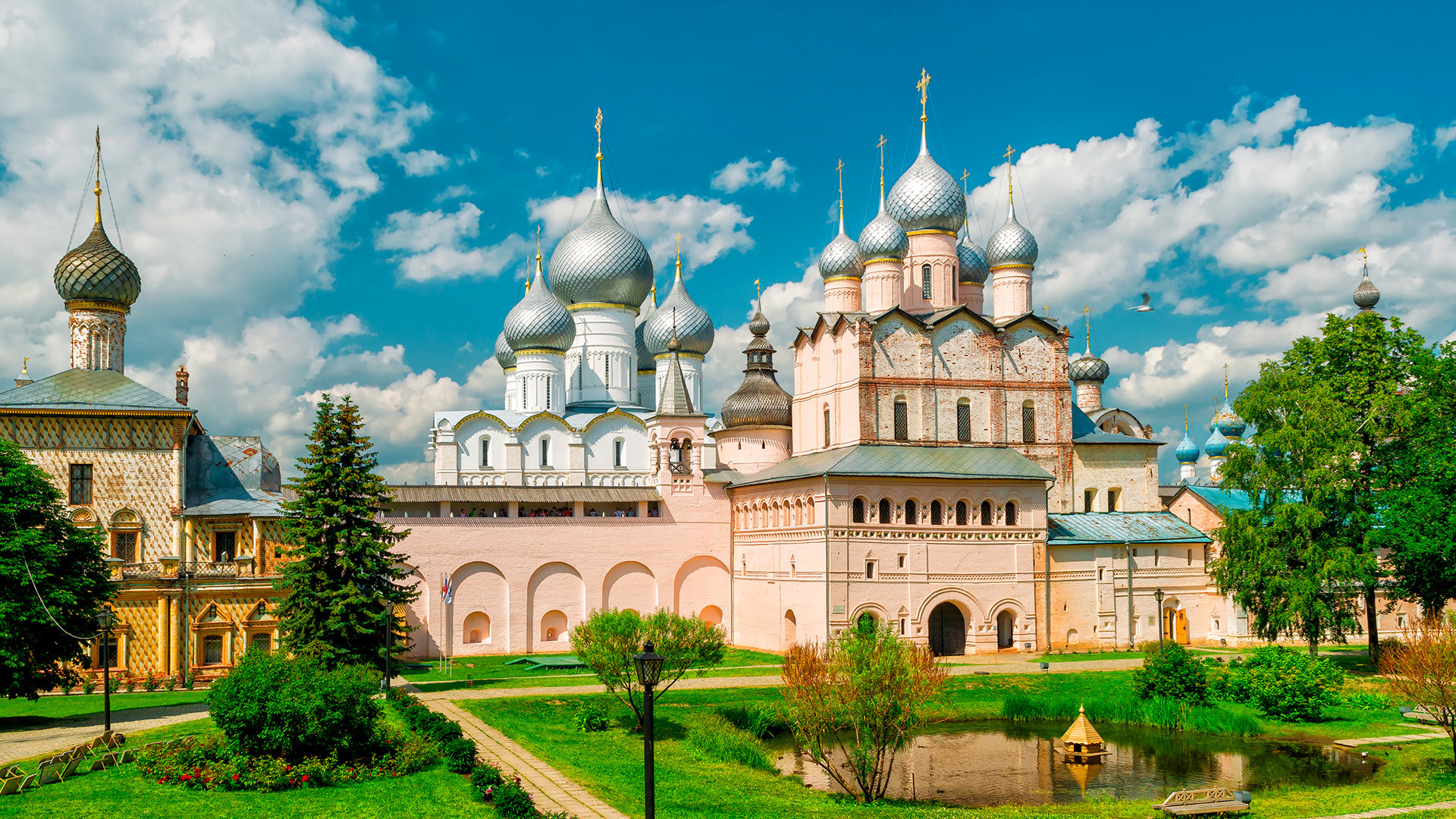 Russia’s Golden Ring is a tourist route that was drawn up during the Soviet era, with the idea of boosting the numbers of foreign tourists traveling to the country. Today, it remains one of the most popular routes for both tourists and domestic Russian tourists. Why was it called so?In 1967 art historian and journalist Yuri Bychkov journeyed through the towns of Vladimir Oblast to write a series of travel articles . The last city he visited was Yaroslavl, so his route took the form of a ring. Later he published his travel notes under the name “The Golden Ring.” Which cities are included?Actually there is no official list of which cities make up the Golden Ring, with the exception of the eight principal cities of Yaroslavl, Kostroma, Ivanovo, Suzdal, Vladimir, Sergiev Posad, Pereslavl-Zalessky, and Rostov Veliky. Apart from this, the cities of Palekh, Plyos, Shuya, Gorokhovets, Gus-Khrustalny, Murom, Yuriev-Polsky, Rybinsk, Tutaev, Uglich, Kasimov (from 2015), and Kaluga (from 2016) are also considered to be a part of the ring. Look at these six beautiful reasons to travel around Russia’s Golden Ring and 13 vintage photos of Russia’s Golden Ring towns . The city located on the Volga River some 150 miles northeast of Moscow. Founded in the early 11th century by Yaroslav the Wise - one of the greatest rulers of medieval Rus - by the 13th century, the settlement already had stone churches within monasteries , unusual during a time when most buildings were made of logs. Look at the Church of John the Baptist at Tolchkovo and its magnificent frescoes . The city center is small enough to visit all the main attractions on foot. And don’t forget to enjoy the bird’s eye view of ancient Yaroslavl ! 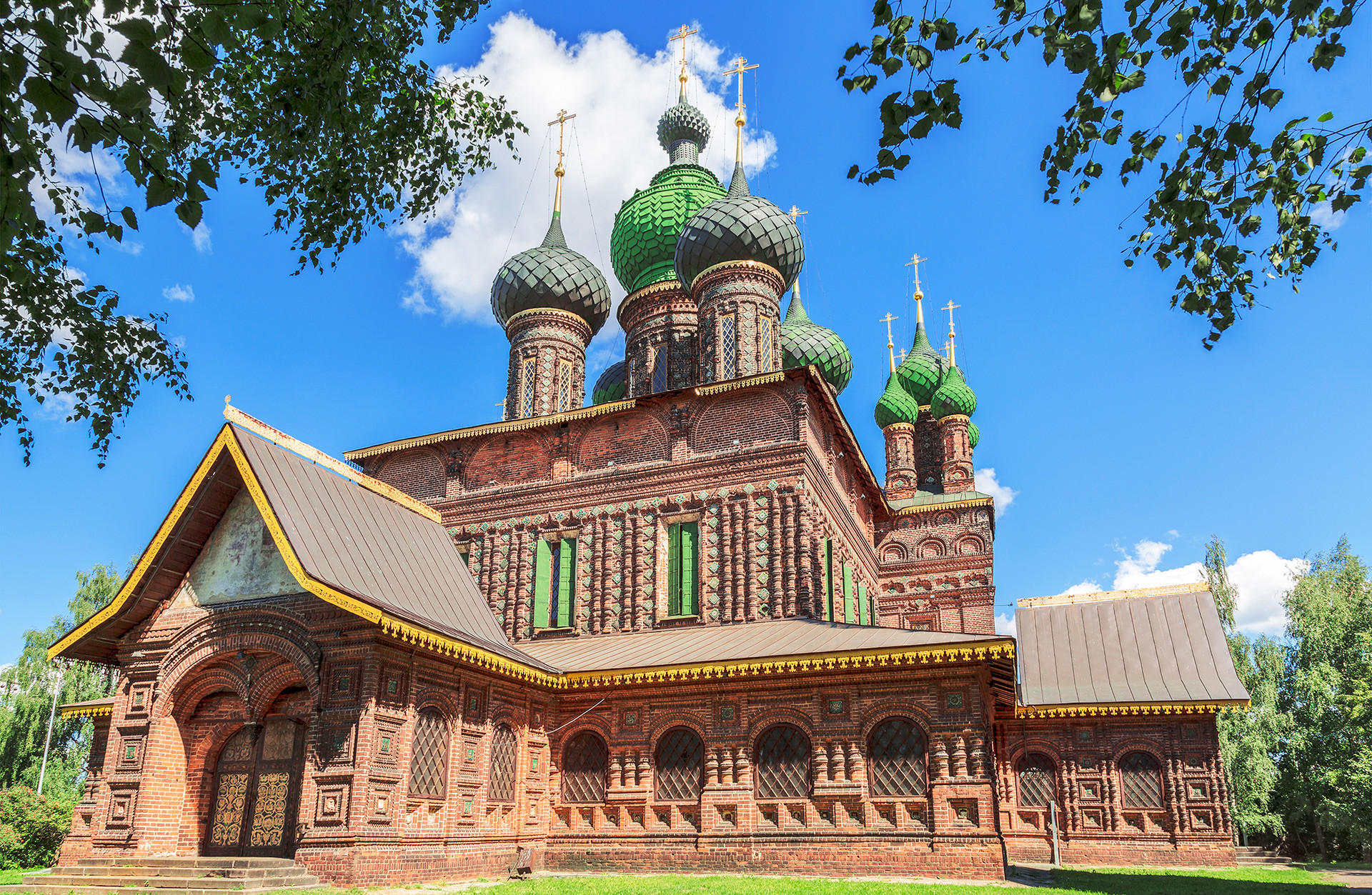 Prince Vladimir Monomach founded Vladimir in 1108 as a defensive outpost. Although the Russian capital moved to Moscow in the 14th century, Vladimir played an important role throughout Russia’s history. Today it’s one of the main stops on the Golden Ring, a rough circle of Russia’s most beautiful cities. Read what to see and where to go in Vladimir if you have only a few days . And don’t forget to check the main landmarks of that great city. For example, one of the great masterpieces of medieval Rus’ survives to this day – Cathedral of the Dormition of the Mother of God . 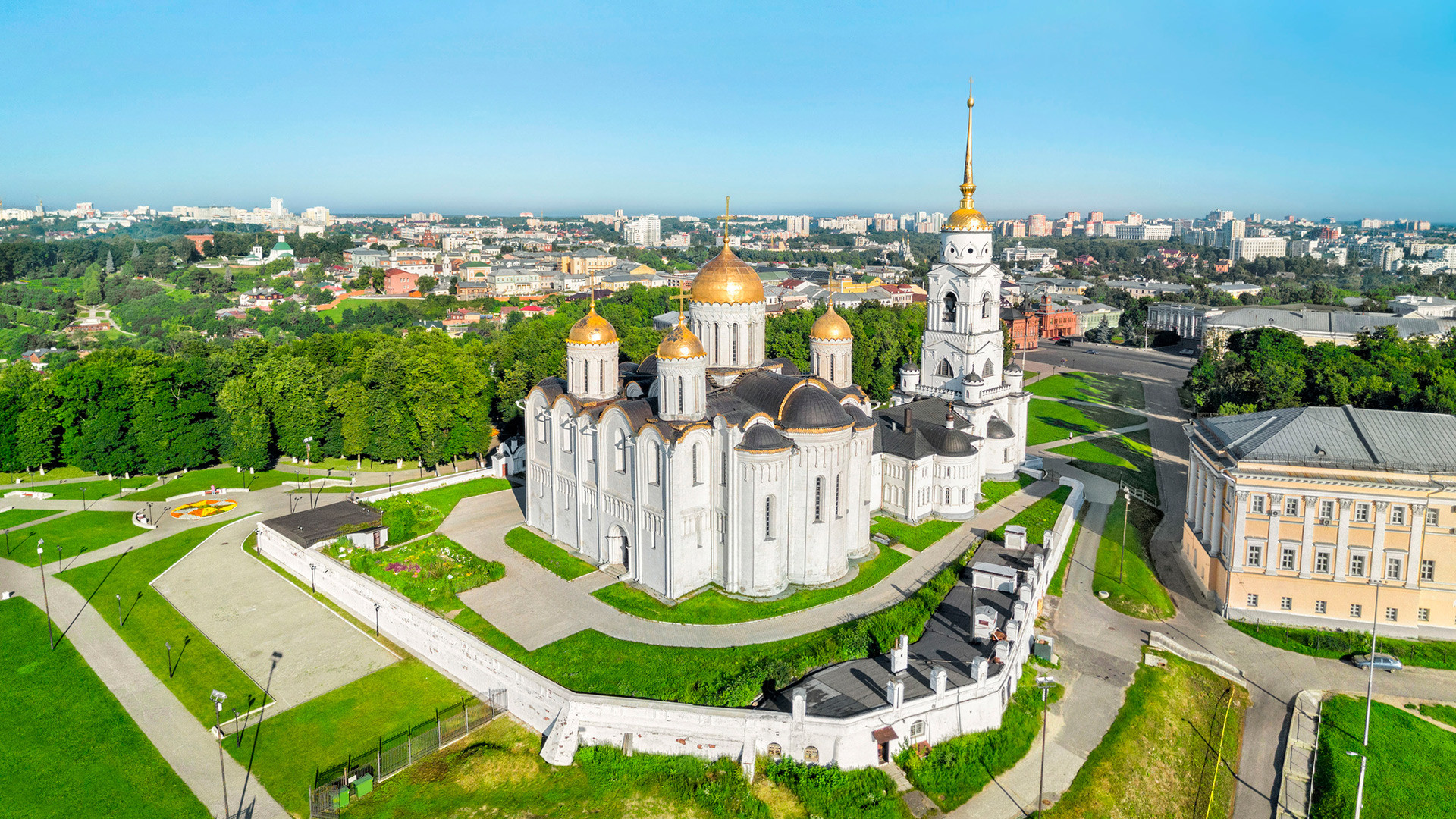 Kostroma is first mentioned in the chronicles in 1213, but is believed by some historians to have been founded by Moscow Prince Yuri Dolgoruky in 1152, making it just five years younger than Moscow. Today, Kostroma is a river port, a light-industry center and a serene spot on the Volga River with a population of about 275,000 people. The town is actively developing. In recent years, Kostroma has worked to promote tourism by restoring monuments and public spaces as well as designing new excursion programs and investing in city festivals and cultural events. Take a while and watch the video showing the aerial view of the ancient city . The Kostroma Region has a wealth of small historic towns, each with a distinctive setting and cultural heritage. Among these is the town of Bui (pronounced like “buoy”), located on the right bank of the Kostroma River some 60 miles north of the city of Kostroma. Did you know that Kostroma is the original home of Russia’s Snegurochka (snow maiden )? One of the main landmarks in Kostroma is the Trinity Cathedral at Ipatiev Monastery , which played a critical role in the history of the Romanov family in the early 17th century. Read how to spend a weekend in charming and slow-paced Kostroma . 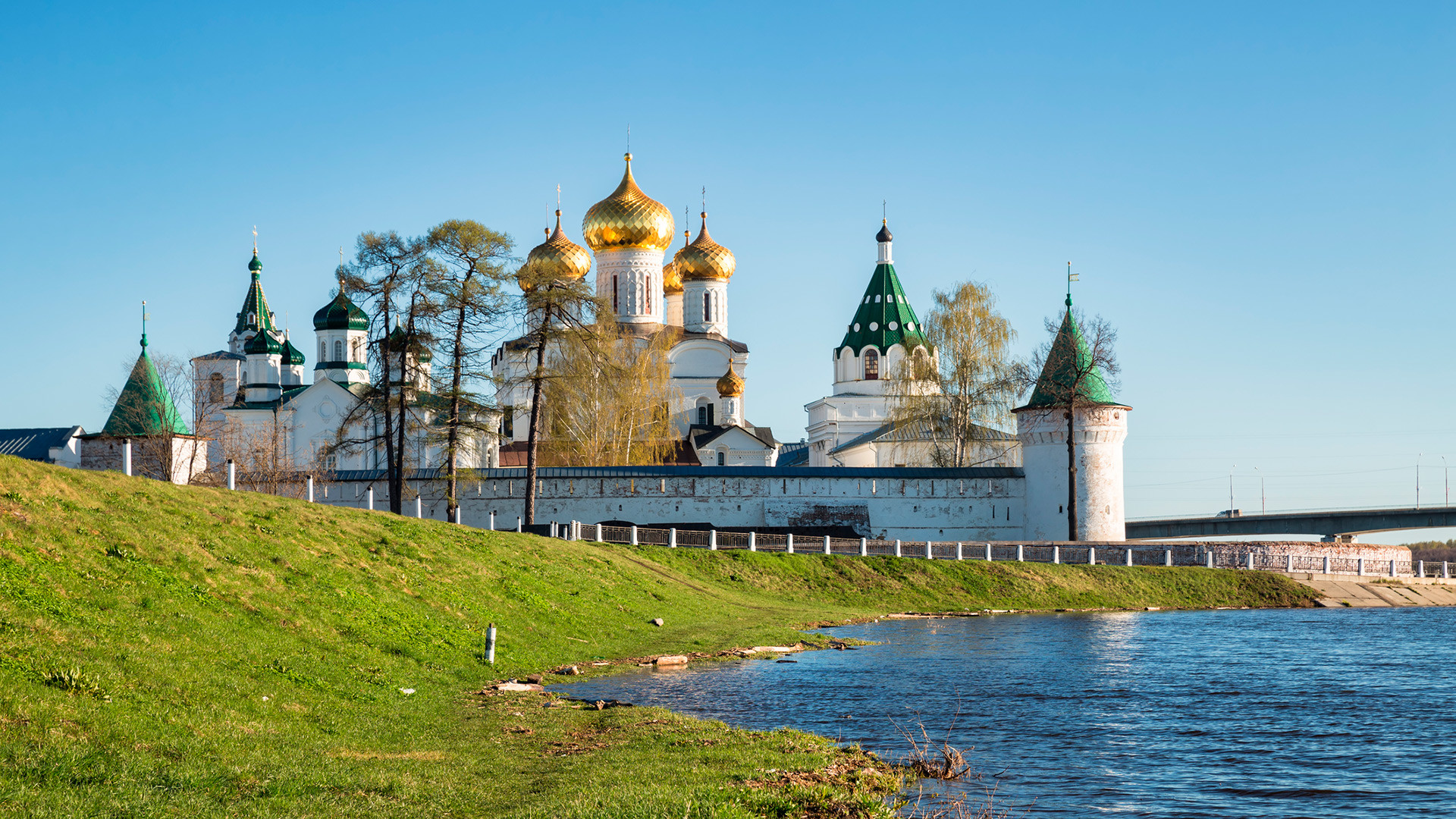 Suzdal is only 137 miles from Moscow. The first record of Suzdal in the chronicles dates back to 1024. In its day, Suzdal was the spiritual center of Old Russia, and this is evident even now. Over an area of 3.5 square miles there are five monasteries, some 30 churches and chapels, and 14 bell towers : More cultural artifacts per square foot than anywhere else in the world, with the possible exception of Old Jerusalem. Read the story about ancient Suzdal: From Prokudin-Gorsky to the present . If you want to get away from the typical tourist haunts and have a taste of unadulterated Russian history and tradition in the Golden Ring city of Suzdal, we have some advice about how to spend a great weekend there. And Tim Kirby can tell you how by spending just $100 ! 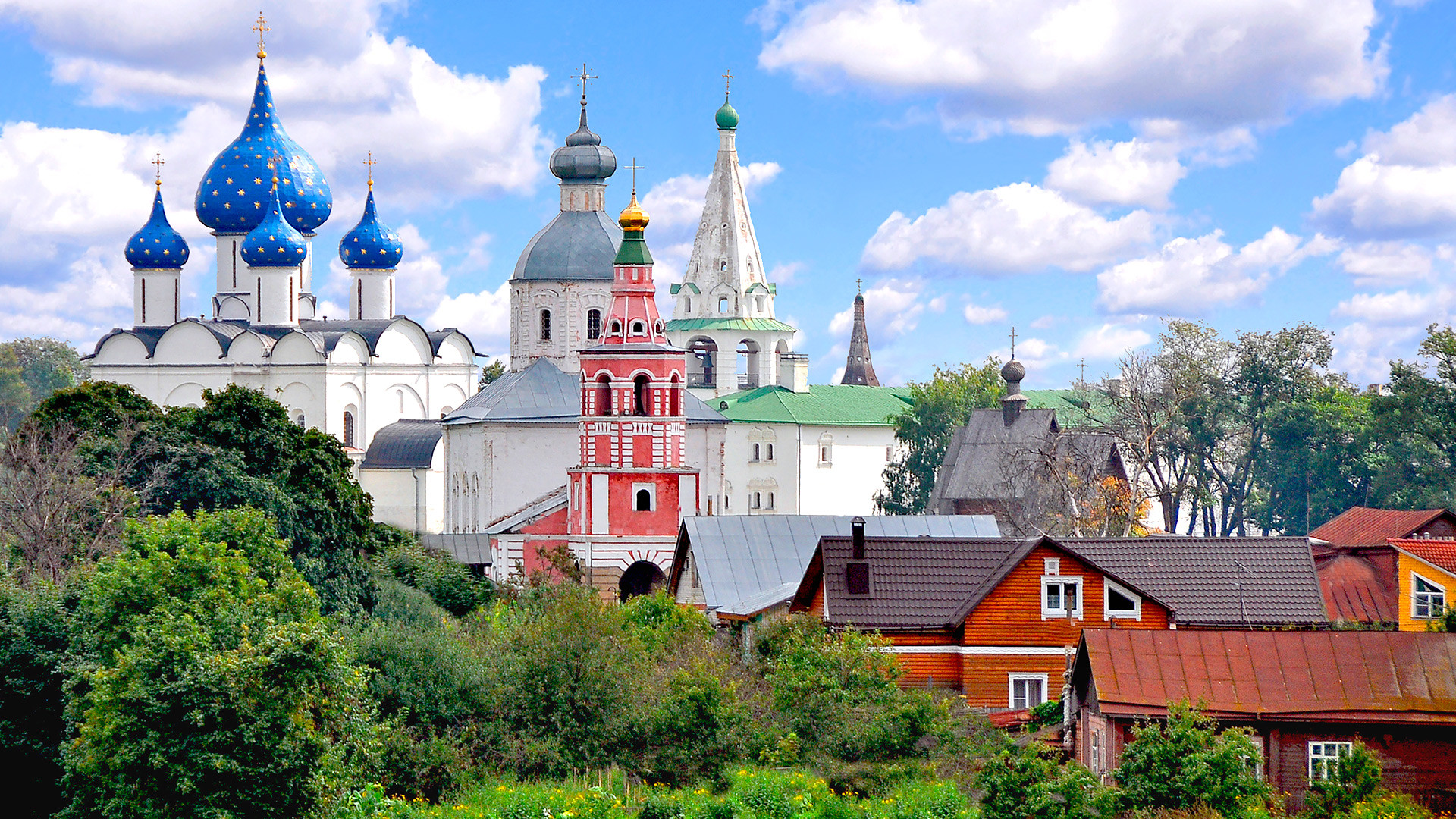 Pereslavl-ZalesskyPereslavl-Zalessky is located near the shores of Lake Pleshcheyev and was established in 1152 by Yuri Dolgoruky, prince of the large territory of Rostov-Suzdal and the founder of Moscow. Pereslavl-Zalessky has had an extraordinary number of monastic institutions – as many as 12 were located in the immediate area during the mid-18th century . One of the most important institution was the Goritsky-Dormition Monastery, f ounded in the early 14th century by Moscow prince Ivan Kalita (1283-1341) . Destroyed by the Tatars in 1382, the wooden monastery was quickly rebuilt and became a major center of religious activity. At the beginning of the 16th century another monk from Goritsky Monastery, Daniil, founded the Trinity-Danilov Monastery . Feodorovsky Convent in Pereslavl-Zalessky is not as well-known or as architecturally significant as some of the other religious sites in the Golden Ring, but this monastery played an important role in early Russian history . 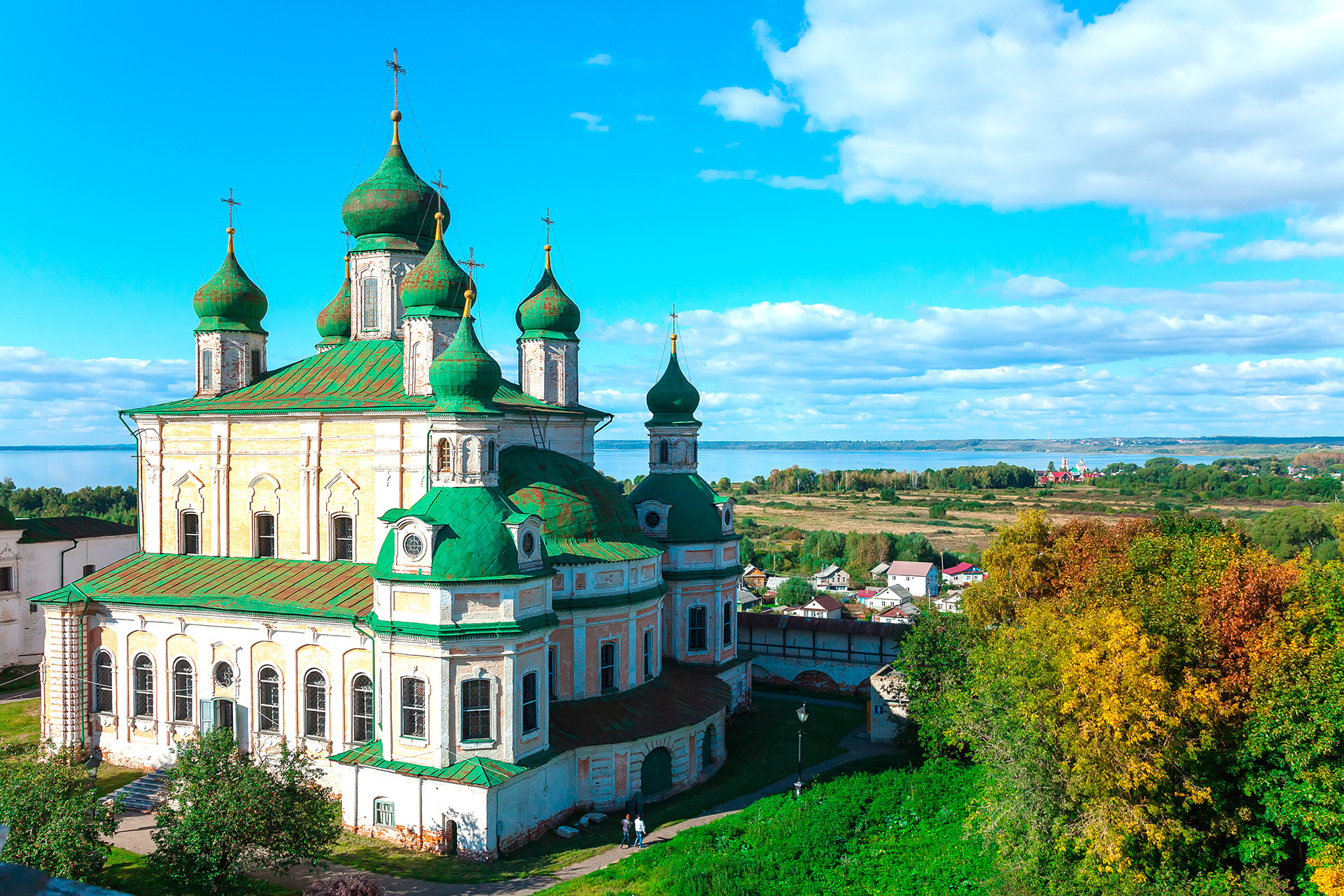 Rostov the GreatRostov the Great is one of the most ancient Russia’s cities. It was first mentioned in the Primary Chronicle for the year 862 . In this year, the Varangian brothers were invited to Rus. To distinguish the town from Rostov-on-Don in southern Russia, it also goes by the name Rostov Veliky, i.e. Rostov the Great. Take a look at Rostov from above. The main landmark of Rostov is its Kremlin, which has remained mostly unchanged over the centuries . Also you can read about Rostov’s most colorful church . 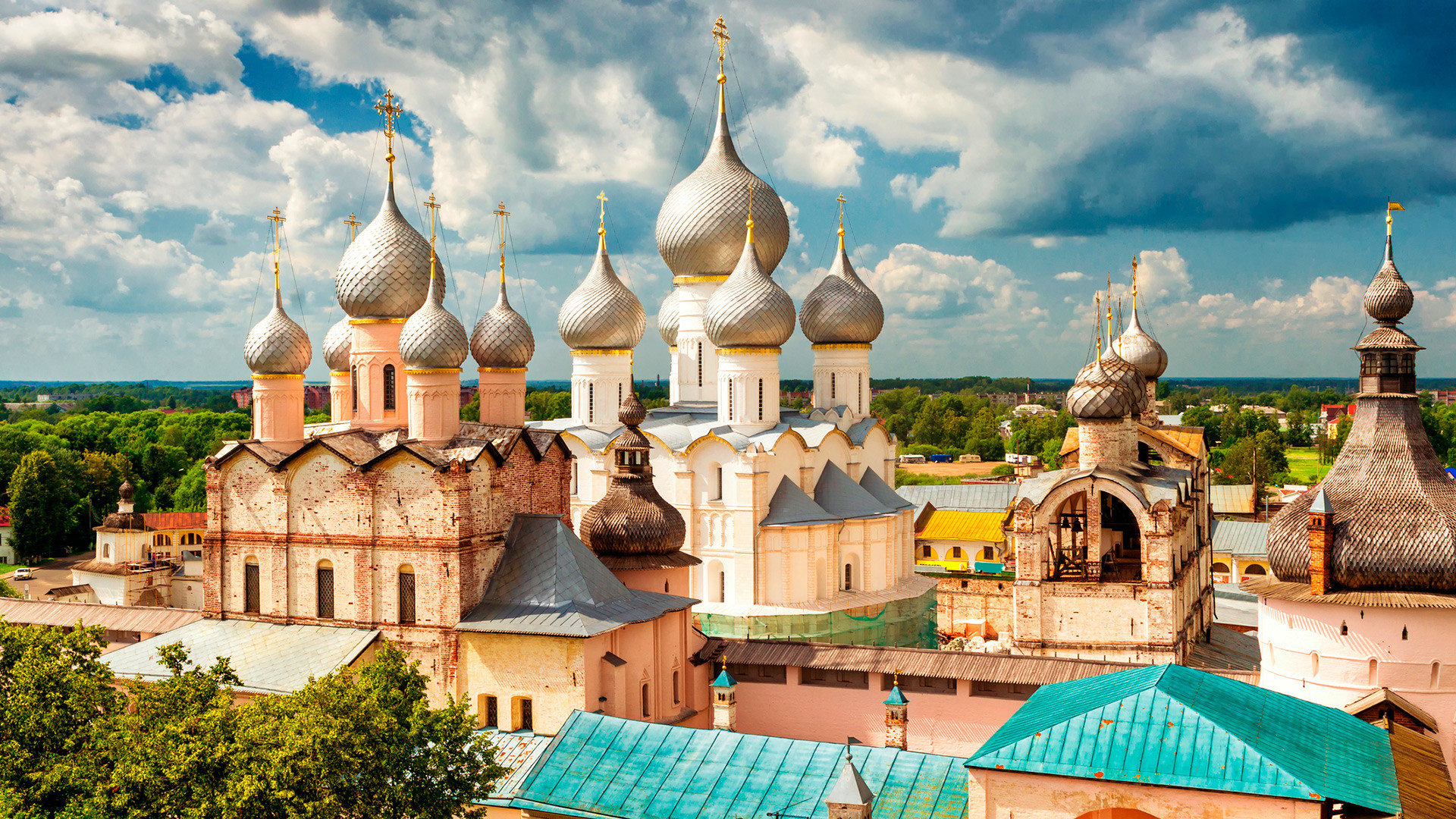 Sergiev PosadSergiyev Posad is the closest to Moscow of all the ancient towns on the Golden Ring with a long history that dates back to the 14th century . Watch a video tour around the city . The town's main place of interest is the famous Trinity-St. Sergius Lavra, founded in the middle of 16th century. 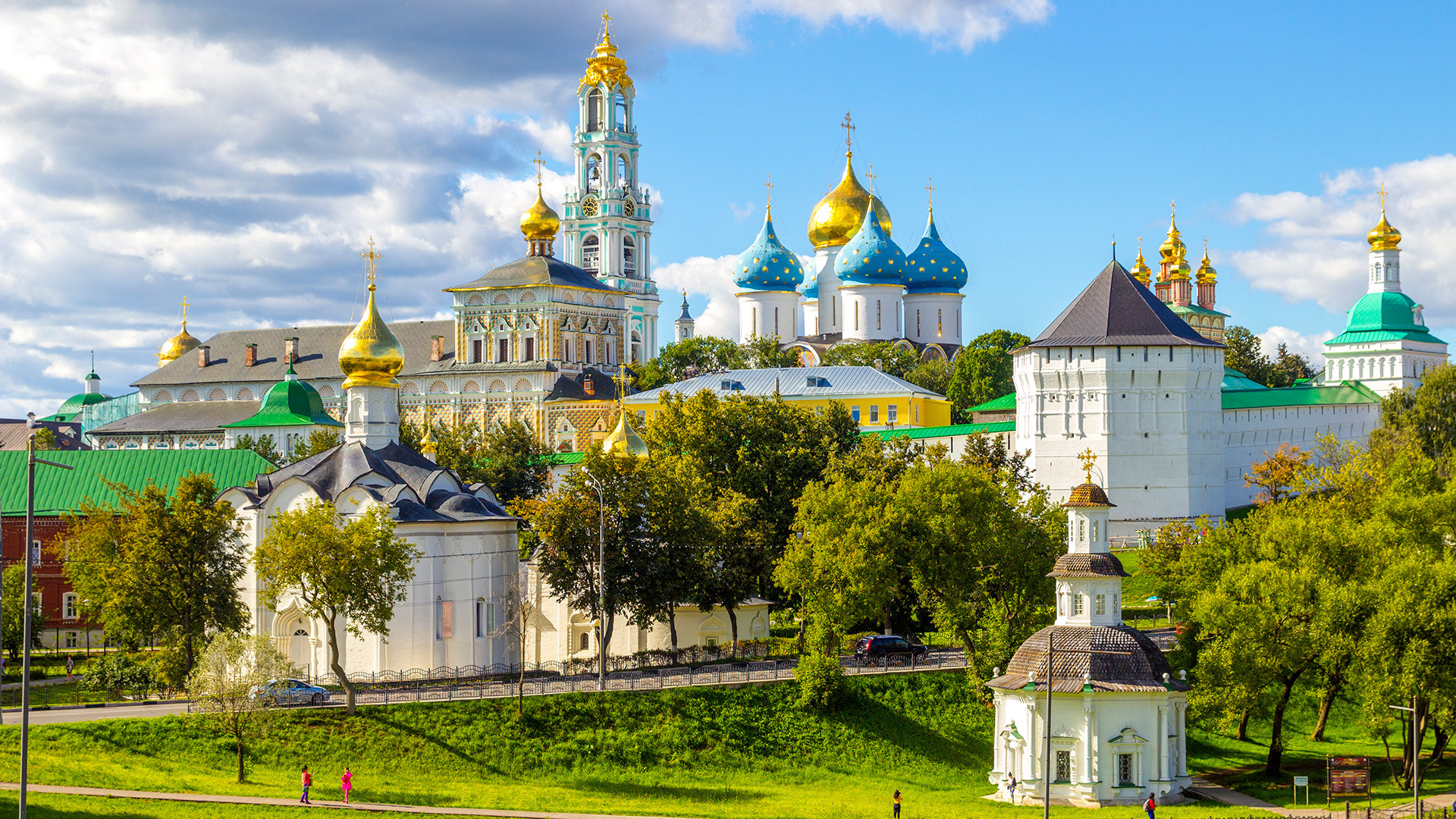 The first mention of the settlement dates back to 1608, so Ivanovo is one of the youngest city of the Golden Ring. Sometimes it’s also called “The City of Brides,” because for 1000 men there are about 1300 women. But this figure is, in fact, not hugely divergent from the national average. Therefore, the situation is not as tragic as it seems, and weddings in the city of brides occur just as frequently as anywhere else. Well, almost. 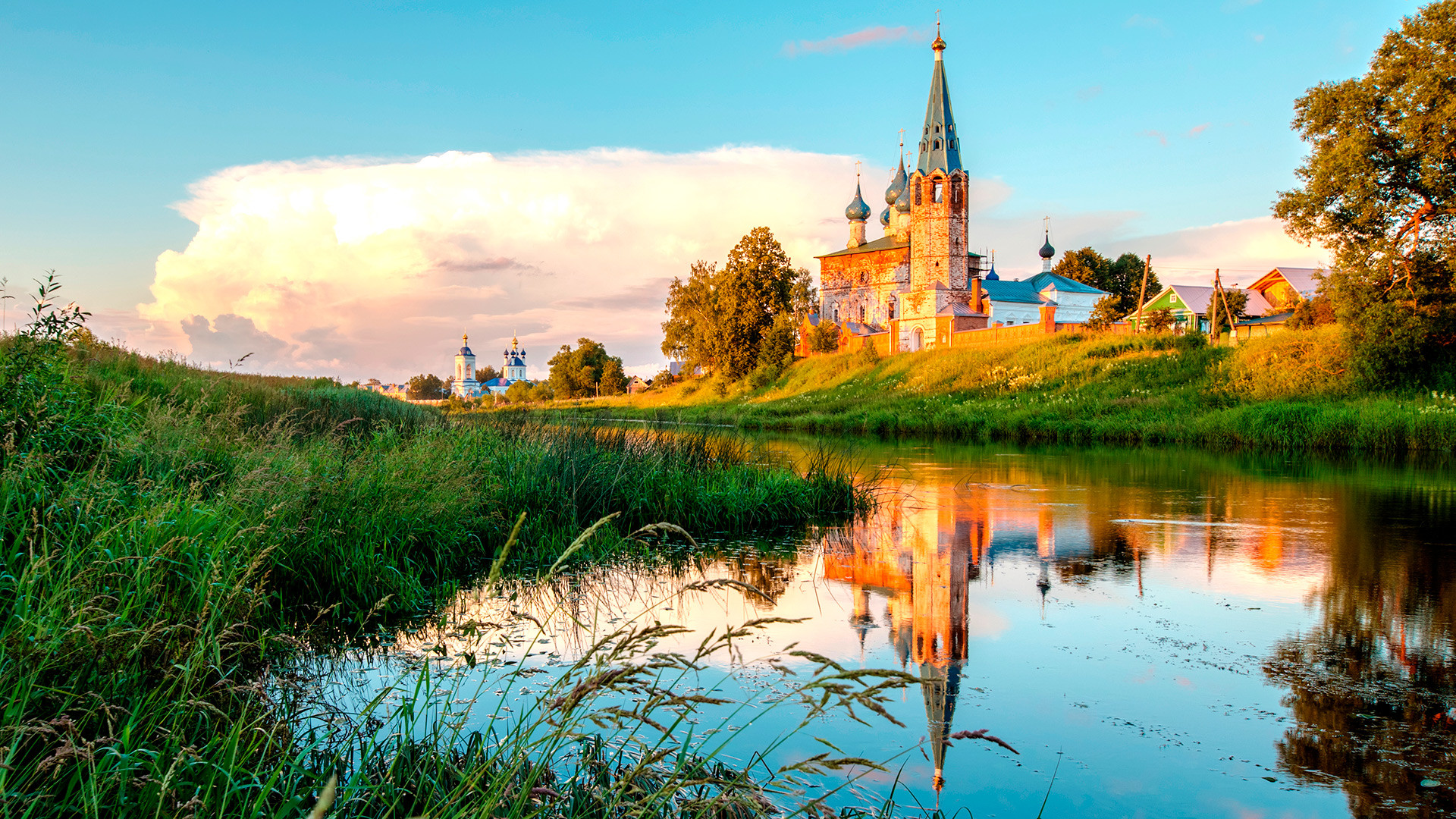 Other cities of the Golden ringUglich : Five must-see places in Uglich, the newborn pearl of Russia’s Golden Ring . Plyos : Fall in love with Russia’s provinces . Kaluga : Restoring cultural heritage . Tutaev : Murakami’s Russian town of sheep . Murom : Medieval symbol of Russian faith and devotion . Yuriev-Polski : Hidden jewel in the Golden Ring . Palekh : F amous for its unique Russian folk art style . And don’t forget to check five culinary adventures on Russia’s Golden Ring ! “Everything you wanted to know…” is an extended guide to the most popular topics about Russia. We constantly work on new material, and this page will be updated with new entries and information as it’s received. If using any of Russia Beyond's content, partly or in full, always provide an active hyperlink to the original material. to our newsletter! Get the week's best stories straight to your inbox - Everything you ever wanted to know about the Russian Revolution
- Everything you wanted to know about Vladimir Putin
- Everything you ever wanted to know about Moscow’s Kremlin
- Everything you wanted to know about Russians but were afraid to ask
- Everything you wanted to know about Moscow
 This website uses cookies. Click here to find out more.  - Visit Our Blog about Russia to know more about Russian sights, history
- Check out our Russian cities and regions guides
- Follow us on Twitter and Facebook to better understand Russia
- Info about getting Russian visa , the main airports , how to rent an apartment
- Our Expert answers your questions about Russia, some tips about sending flowers
 Russian regions- Belgorod oblast
- Bryansk oblast
- Ivanovo oblast
- Kaluga oblast
- Kostroma oblast
- Kursk oblast
- Lipetsk oblast
- Moskovskaya oblast
- Orlovskaya oblast
- Ryazan oblast
- Smolensk oblast
- Tambov oblast
- Tula oblast
- Tver oblast
- Vladimir oblast
- Voronezh oblast
- Yaroslavl oblast
- Map of Russia
- All cities and regions
- Blog about Russia
- News from Russia
- How to get a visa
- Flights to Russia
- Russian hotels
- Renting apartments
- Russian currency
- FIFA World Cup 2018
- Submit an article
- Flowers to Russia
- Ask our Expert
Vladimir city, RussiaThe capital city of Vladimir oblast . Vladimir - OverviewVladimir is one of the oldest cities of Russia located mainly on the left bank of the Klyazma River about 186 km east of Moscow. The administrative center of Vladimir Oblast, it is one of the largest tourist centers in the European part of Russia, included in the tourist route “The Golden Ring of Russia”. The population of Vladimir is about 348,700 (2022), the area - 137 sq. km. The phone code - +7 4922, the postal codes - 600000-600903. Vladimir city flagVladimir city coat of arms. 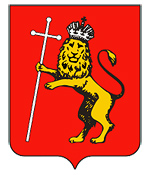 Vladimir city map, RussiaVladimir city latest news and posts from our blog:. 24 September, 2023 / Color photos of Suzdal in 1912 . 31 May, 2023 / Gorokhovets - a picturesque historical town in Vladimir Oblast . 23 October, 2021 / Suzdal - a unique old Russian town . 26 February, 2021 / Winter in Svyato-Vvedensky Island Convent near Pokrov . 18 December, 2020 / The Holy Protection Convent in Suzdal . More posts.. History of VladimirFoundation of vladimir. The first people began to settle in the territory of today’s Vladimir in the Paleolithic era, about 34 thousand years ago. In the 6th-7th centuries, the Volga-Finnish tribe of Merya settled here. In the 8th-10th centuries, on the hill where the Assumption Cathedral was later built, there had been a Meryan settlement. In the 9th-10th centuries, the Slavs began to settle here, in particular, the Krivichi. There are two alternative years for the founding of Vladimir: 1108 and 990. In the Soviet period, the version was accepted that Vladimir had been founded by Prince Vladimir Monomakh around 1108. Accordingly, the 850th anniversary of the city was celebrated in 1958. In the 1990s, local historians, based on a number of chronicle sources, spoke in favor of another year of the city’s foundation - 990. And another Vladimir was named the founder of the city - Prince Vladimir Svyatoslavich, also known as Vladimir the Great (Christianized the Kievan Rus in 988). Vladimir grew thanks to the princes Vladimir Monomakh (1053-1125) and Yuri Dolgoruky (1090-1157), who strengthened it as a stronghold for the defense of the Rostov-Suzdal principality. Prince Andrey Bogolyubsky (1111-1174) transferred the capital of the principality to Vladimir in 1157. In this town, as the new capital of North-Eastern Russia, the Assumption Cathedral was erected in 1158-1160. The Golden Gate (built around 1164) became the key point of the town’s defense. Under the successors of Prince Andrei Bogolyubsky, the town expanded greatly. In Vladimir and neighboring Suzdal, the Vladimir-Suzdal icon-painting school was formed; the town had its own chronicle. The Vladimir principality reached its highest power during the reign of Prince Vsevolod the Big Nest (1176-1212), when the Cathedral of Saint Demetrius (1194-1197) was built. More Historical Facts… Vladimir in the 13th-17th centuriesIn 1238, during the Mongol invasion of Rus’ (1237-1240), Vladimir was taken after a short siege and plundered. The princes of Vladimir were recognized in the Golden Horde by their status as the chief and oldest in all of Rus’. Vladimir remained the capital of the Russian lands. The status of the town increased in 1299, when it became the residence of the Russian metropolitans. At the beginning of the 14th century, a struggle for control over the Vladimir principality unfolded between Tver, Suzdal and Moscow. In 1325, under Grand Duke of Moscow Ivan Kalita, Metropolitan Peter moved from Vladimir to Moscow, which strengthened the Moscow principality as a contender for the unifier of the Russian lands. Subsequently, the Moscow prince Dmitry Donskoy (1350-1389) managed to achieve recognition of his hereditary rights to Vladimir from all neighboring princes and the Golden Horde, which meant his recognition as the Grand Duke of Vladimir and Moscow. This meant the annexation of the Vladimir lands to the Moscow principality. In 1382, Vladimir, like other towns of North-Eastern Rus’, suffered from the invasion of Khan Tokhtamysh of the Golden Horde. In 1395, during the military campaign of Timur against Tokhtamysh, the miraculous and especially revered icon of the Vladimir Mother of God was brought to Moscow from Vladimir to protect it from the conqueror. The fact that the troops of Timur, for no apparent reason, turned back near Yelets (about 400 km south of Moscow), was regarded as the intercession of the Mother of God and the icon was not returned to Vladimir. With the growth of Moscow, Vladimir turned into an ordinary provincial town. In 1614, the population of the town was only about 600 people. Vladimir in the 18th - early 20th centuriesSome economic and cultural upsurge of Vladimir began at the end of the 18th century, when it became the administrative center of the Vladimir Governorate. In 1784, the population of Vladimir was about 2,500 people. In November 1797, the first printing house in Vladimir was opened, in January 1834 - the first provincial public library, in 1847 - a drama theater, in 1862 - a provincial museum of local lore. In 1838-1840, Alexander Herzen, “the father of Russian socialism”, was in exile in Vladimir. In 1861, Vladimir was connected to Moscow by railway (Moscow-Nizhny Novgorod railway). In 1858, a telegraph began to operate in the town, in 1866, the construction of a water supply was completed, and in 1887, a telephone connection was established. In 1908, the first power plant was put into operation. According to the first all-Russian census of 1897, 28,479 people lived in Vladimir: Russians - 26,436, Poles - 736, Ukrainians - 488, Jews - 399. At the end of the 19th century, a Lutheran church and a Catholic church were built in Vladimir. At the turn of the centuries, the Russian Revival style of Russian architecture spread in Vladimir, the most striking examples of which were the Church of the Archangel Michael (1893) and the building of the Vladimir Historical Museum (1903). In 1914, the population of Vladimir was 47,020 people. In the first years of Soviet power, many streets of Vladimir were renamed, most of the churches were closed and demolished. Two decades before World War II were the time of accelerated industrialization and the transformation of the city into a large industrial center. On January 14, 1929, during the territorial and administrative reform, Vladimir became part of the newly formed Ivanovo Industrial Oblast. On March 5, 1932, the plant “Khimplastmass” (the Vladimir Chemical Plant) began operation. In 1939, the population of Vladimir was 66,797 people. Vladimir during and after World War IIDuring the Second World War, Vladimir was one of the largest evacuation centers in the European part of the USSR. In 1941-1945, there were 18 evacuation hospitals in the city. In the fall of 1941, a lot of refugees came to Vladimir from Moscow and the Moscow region; they were leaving to the east from the German offensive. On August 14, 1944, Vladimir again became the center of a separate region - Vladimir Oblast. In the first post-war years, there were three camps and a hospital for prisoners of war in Vladimir. The largest of them was Camp #190, which also had branches in the towns and villages of the region. In 1946, there were about 10 thousand people in this camp. By 1949, all prisoners of war returned to Germany. After the war, large enterprises of machine-building, metal-working, electrical, instrument-making, chemical, and light industries were built in the city. In August 1958, a solemn celebration of the 850th anniversary of Vladimir took place. By the end of the 1950s, the city’s population exceeded 150 thousand people. In 1960, the construction of an arched reinforced concrete bridge was completed - the first permanent bridge across the Klyazma, which made it possible to start the construction of a residential district (Zagorodny Park) and a regional hospital center on the right bank of the river. In the early 1970s, Vladimir became one of the centers of the Golden Ring of Russia - a well-known tourist theme-route uniting several old Russian cities. In 1980, the population of Vladimir exceeded 300 thousand people. Architecture of Vladimir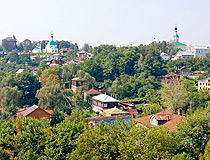 Cityscape of the old Vladimir Author: Sergey Ashmarin 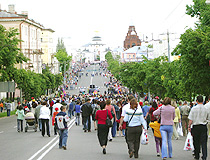 In the center of Vladimir on a holiday Author: Boris Shmelyov 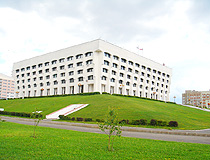 Vladimir Oblast Administration known as the White House Author: Catherina Zhigunova Vladimir - FeaturesIn the past, such variants of the name of the city as Vladimir-on-Klyazma and Vladimir-Zalessky were also used in connection with the existence of the town of the same name in South-Western Rus’ (Vladimir-Volynsky in Volyn Oblast of today’s Ukraine). Today’s coat of arms of Vladimir repeats its historical coat of arms with the following description: “In the red field, a lion standing on its hind legs with an iron crown on its head, holding a long silver cross in its front right paw.” The oldest central part of Vladimir lies on the high left bank of the Klyazma River, on hills steeply descending to the river, separated by deep ravines. The Klyazma flows through the city for 2.5 km and another 5 km along the city border; the width of the river in Vladimir is about 130 m. The climate in Vladimir is moderately continental. Winters are moderately cold, with alternating periods of frosts and thaws. Summers are warm, but relatively short, with occasional periods of extreme heat. The average temperature in January is minus 9.8 degrees Celsius, in July - plus 19.8 degrees Celsius. Vladimir is an important industrial center of Central Russia. Large enterprises of machine-building, metal-working, electrical, instrument-making, chemical, light and food industries, and the construction industry operate in the city. Public transport is represented by trolleybuses and buses. There are regular buses running from Vladimir to all district centers of Vladimir Oblast, as well as to Moscow, Ivanovo, Kostroma, Nizhny Novgorod, Ryazan, Yaroslavl, and other cities. Vladimir is connected by railway with Moscow and Nizhny Novgorod. First and foremost Vladimir is a city-museum with unique historical and architectural monuments - three white-stone monuments of pre-Mongol architecture, recognized as a UNESCO World Heritage Site as part of the object “The white-stone monuments of Vladimir and Suzdal”. These are the Assumption Cathedral (1158-1189), Dmitrievsky Cathedral (1194-1197), and the Golden Gate (1158-1164). In comparison with other cities of the “Golden Ring”, churches of the 17th-18th centuries in Vladimir are not so numerous. In architectural terms, the most interesting are the Church of the Assumption of the Blessed Virgin Mary (1649), Church of St. Nicholas the Wonderworker (1732-1735), and Church of the Beheading of John the Baptist (1762-1765), commonly known as Nikitskaya Church. The pseudo-Gothic Catholic Church of St. Rosary, built in 1894, is worth mentioning among the monuments of the late 19th century. In total, there are more than 200 state-protected buildings of the 18th-19th centuries in Vladimir. After 1917, the historic city center was almost completely rebuilt. Walking is the easiest and most comfortable way to explore Vladimir. Its compact historic center can be walked through in about 30-40 minutes. Souvenirs can be bought in one of the shops of the Trading Rows (Bolshaya Moskovskaya Street, 19), as well as from the stalls at the Golden Gate or the Dmitrievsky Cathedral. For authentic gifts, you should visit the shop at the Museum of Crystal and Lacquer Miniatures in the Trinity Church (Dvoryanskaya Street, 2). You can buy souvenirs with images of Vladimir architectural monuments (plates, boxes, paintings, etc.), Pokrovsky gingerbread, Mstersk lacquer miniature, crystal from Gus-Khrustalny. Such birch bark products as boxes and sandals (lapti) are also popular, as well as all kinds of scarves, towels, patchwork, and stone jewelry. Main Attractions of VladimirThe Golden Gate (1158-1164) - one of the main symbols of Vladimir, the only one of the surviving gates in the earthen rampart that encircled old Vladimir. In the 12th century, this gate served as the main entrance for the prince and his retinue to the central part of the town. The Golden Gate got its name because in the past the gates were sheathed with gilded copper sheets. At the top of the structure there is a small chapel. This unique example of the architecture of Kievan Rus’ is included in the program of sightseeing tours around Vladimir. In the upper part of the building, there is a military-historical exposition with weapons and military equipment from different times. Bolshaya Moskovskaya Street, 1a. Holy Assumption Cathedral (1158-1189) - the main Orthodox church of Vladimir, an outstanding monument of the white-stone architecture of pre-Mongol Rus’. Historically, before the rise of Moscow, it was the main church of Vladimir-Suzdal Rus’ and served as a model for a number of later cathedrals, including the Assumption Cathedral in the Moscow Kremlin. It is one of the few churches in which the original frescoes by Andrei Rublev have survived. Bolshaya Moskovskaya Street, 56. Cathedral of Saint Demetrius (1194-1197) - one of the greatest monuments of Russian church architecture of the pre-Mongol period, an excellent example of a white-stone church of the Vladimir-Suzdal architectural school. Consecrated in honor of the Christian martyr Demetrius of Thessaloniki, this cathedral is famous for its white stone carvings. Its walls are decorated with about 600 reliefs depicting saints, mythical and real animals. Outwardly, it resembles the famous Church of the Intercession on the Nerl located near Vladimir. Bolshaya Moskovskaya Street, 60. Museum complex “Palaty” - a large three-storey building constructed in the classical architectural style in yellow and white colors. The first floor is reserved for exhibitions for children. The second floor is dedicated to the life of the nobility - “Charm of Bygone Days” (antique vases, old furniture, etc.). There is also an art gallery where you can see masterpieces of Russian painting from different times. The third floor is reserved for various exhibitions. Bolshaya Moskovskaya St, 58. Vladimir Historical Museum - a beautiful two-story mansion built of red brick in the pseudo-Russian style in 1900-1906. The exposition of this museum is devoted to the history of the city and the region, from the prehistoric era to the present day. Here you will see archaeological finds, old jewelry and dishes, documents, church relics, picturesque portraits, and other genuine exhibits. Bolshaya Moskovskaya Street, 64. Holy Trinity (“Red”) Church (1913-1916) - a former Old Believer church in Vladimir, built of red brick in the neo-Russian style. Today, the building is occupied by the museum “Crystal. Lacquer Miniature. Embroidery”. Its collection, which includes pre-revolutionary masterpieces and outstanding works of contemporary masters, brings together the best examples of traditional arts and crafts. Dvoryanskaya Street, 2. Museum “Old Vladimir” . This museum occupies the building of a former water tower - a monument of provincial industrial architecture built in the pseudo-Gothic style in 1912. The exposition shows the life of Vladimir at the turn of the 19th-20th centuries - the interiors of the room of a wealthy citizen, a tavern with a traditional samovar, a police station, a church shop. On the top floor of the former water tower there is a great observation deck, from where almost all the main sights of Vladimir are perfectly visible. Kozlov Tupik Street, 14. Church of the Holy Rosary of the Blessed Virgin Mary (1892-1894) - one of the most beautiful buildings in Vladimir, a majestic Catholic church built in the style of red-brick neo-Gothic. It was built due to the fact that there were quite a lot of exiled Poles and Lithuanians in Vladimir by the end of the 19th century. Divine services in Russian and concerts of organ music are held here, which everyone can enjoy. Gogolya Street, 12. The Ferris Wheel “Sky 33” - one of the largest Ferris wheels in Russia with a height of 50 meters. From the top point, you can see up to 70% of the territory of Vladimir. The wheel has 32 indoor heated and air-conditioned cabins for up to 6 people and makes one circle in 15 minutes. You can enjoy the views of Vladimir from above in any weather. Mira Street, 36 (Central Park of Culture and Rest). Church of the Beheading of John the Baptist (also known as the Nikitskaya Church) (1762-1765) - a picturesque tall three-story green-and-white church, an architectural monument of federal significance. The building of this church constructed in the provincial baroque style looks more like a noble residence, rather than a religious building. Knyagininskaya Street, 8. Observation decks on Georgievskaya Street . Georgievskaya Street is a pedestrian alley in the center of Vladimir, along which a lot of city attractions are located. Locals call it “Vladimir Arbat”. There are two observation decks on this street, from where you can see the banks of the Klyazma River and the magnificent Holy Assumption Cathedral. Church of the Intercession on the Nerl - one of the most beautiful and interesting Russian Orthodox churches, an outstanding monument of Vladimir-Suzdal architecture built in the middle of the 12th century. It is located about 1.5 km from the village of Bogolyubovo, 12 km north-east from the center of Vladimir. Vladimir city of Russia photosChurches of vladimir. 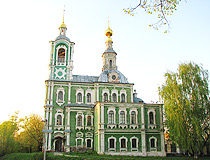 Nikitskaya Church in Vladimir Author: Natasha Fisher 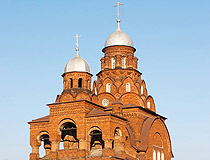 Trinity (Red) Church in Vladimir Author: Kostya Markin 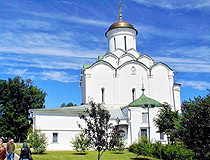 Assumption Cathedral of the Holy Assumption Convent in Vladimir Author: Sergey Bulanov Pictures of Vladimir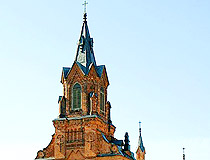 St. Rosary Catholic Church in Vladimir Author: Sergey Duhanin 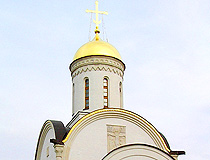 Cathedral of the Nativity of the Blessed Virgin Mary in Vladimir Author: Oleg Lomov 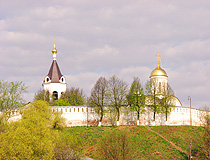 Nativity Monastery in Vladimir Pre-Mongol white-stone architectural monuments of Vladimir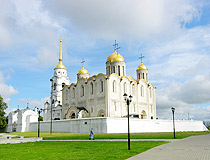 Holy Assumption Cathedral in Vladimir Author: Tom Sellek 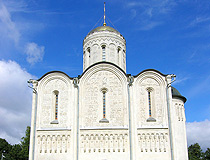 Cathedral of Saint Demetrius in Vladimir 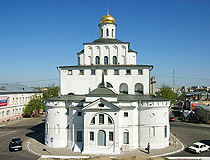 The Golden Gate in Vladimir The comments of our visitorsRating: 3.1 /5 (212 votes cast) Sponsored Links: | 


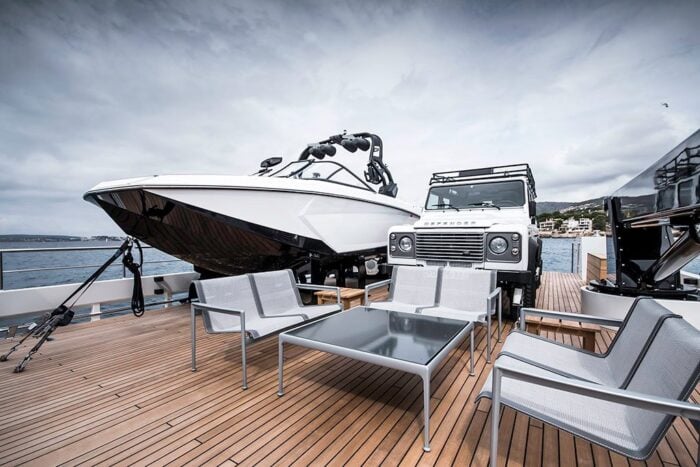
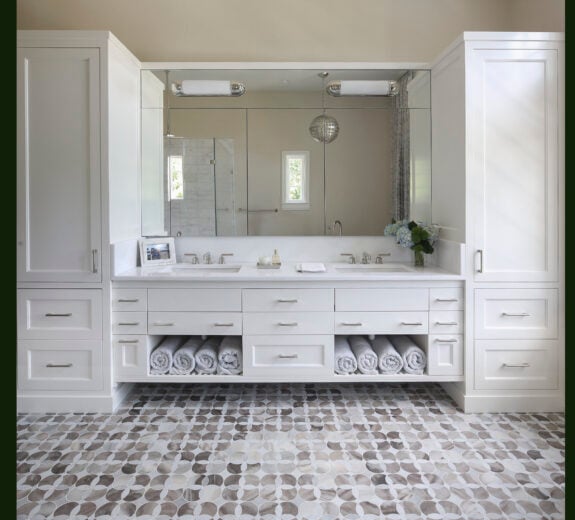



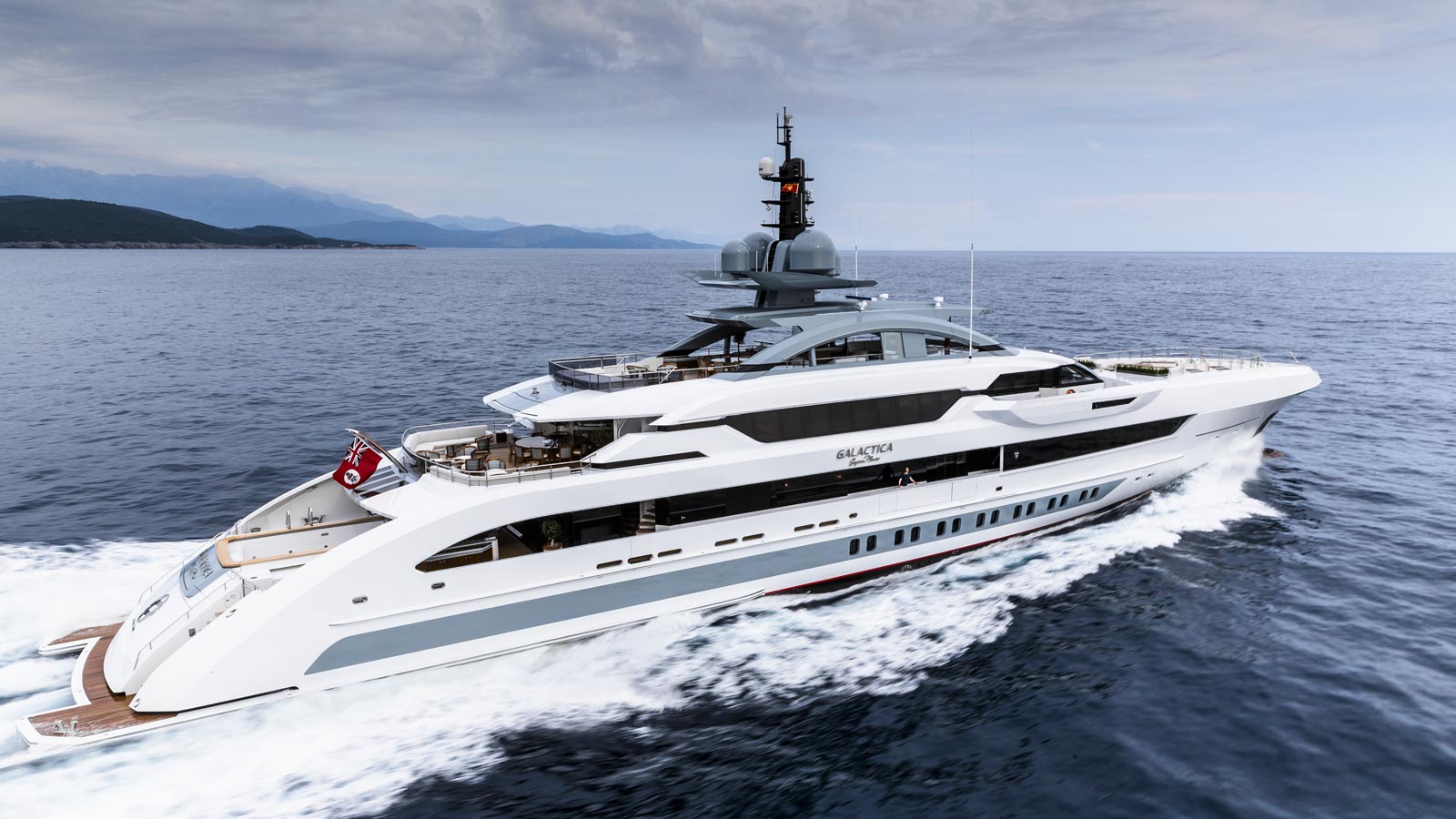
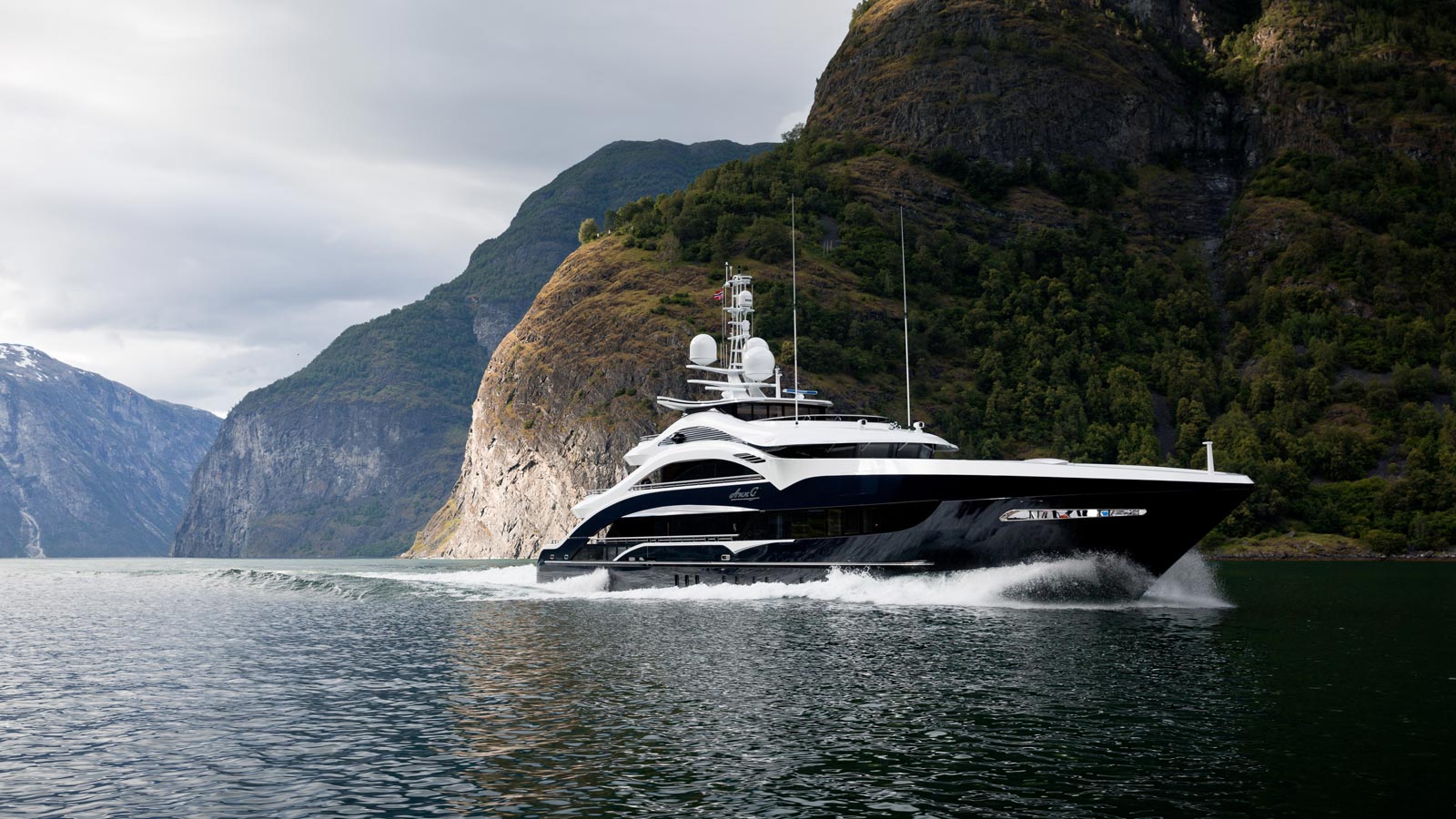
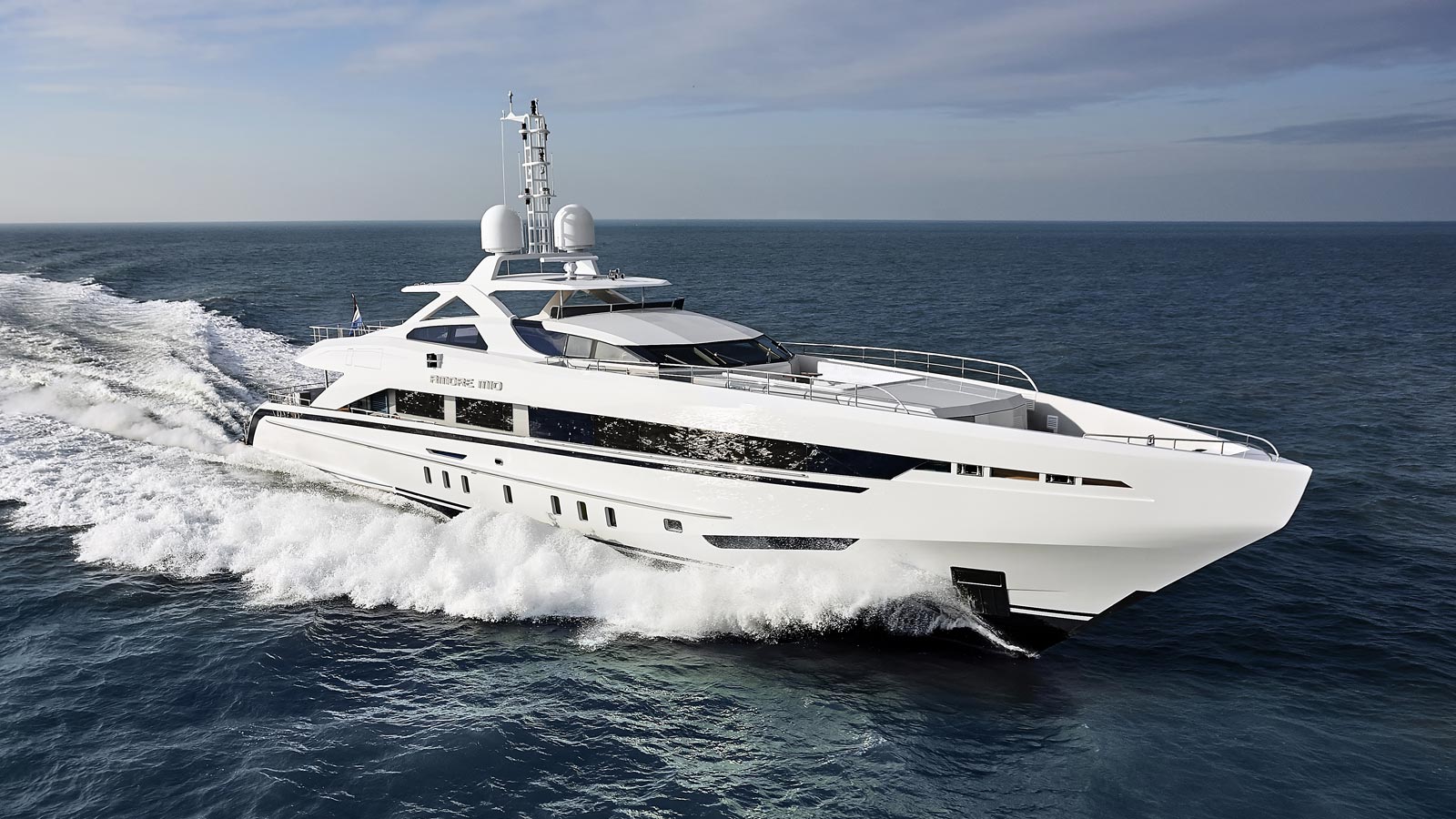
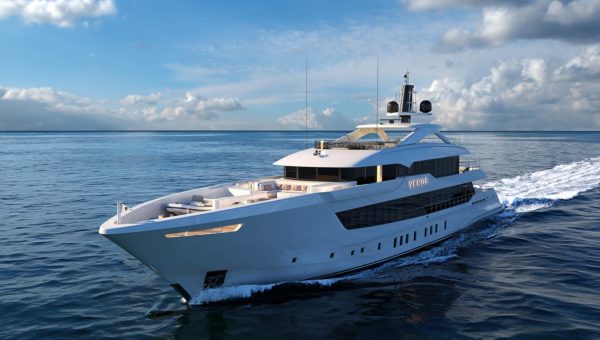
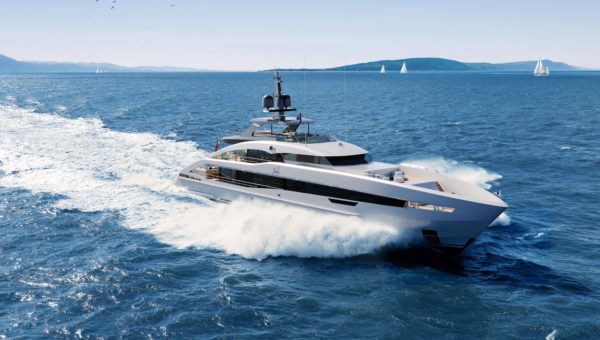
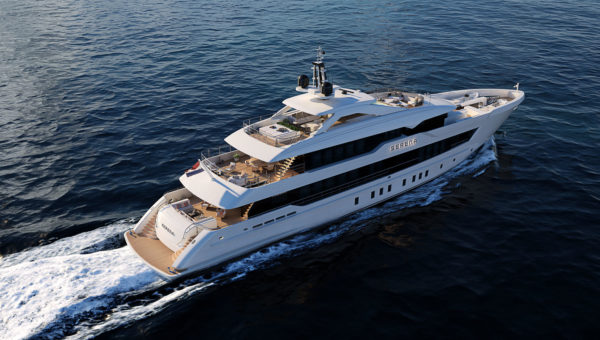
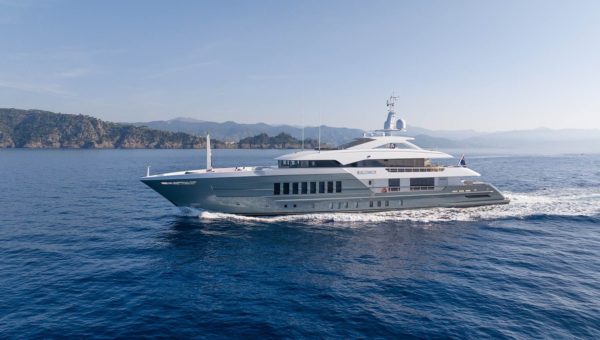
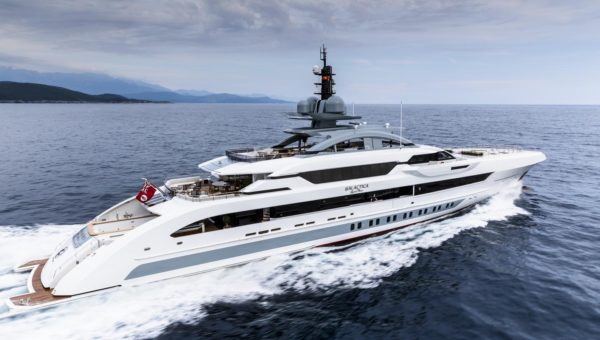
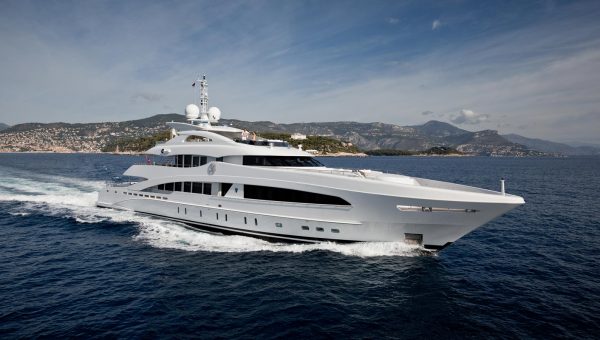
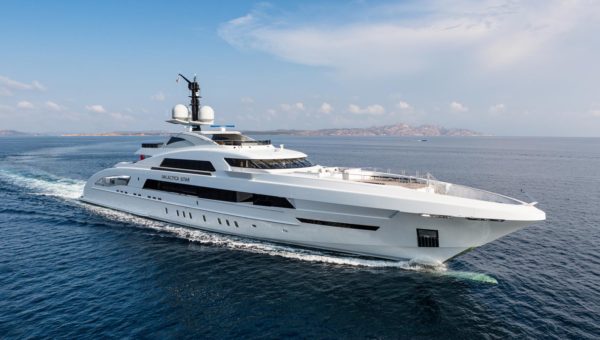
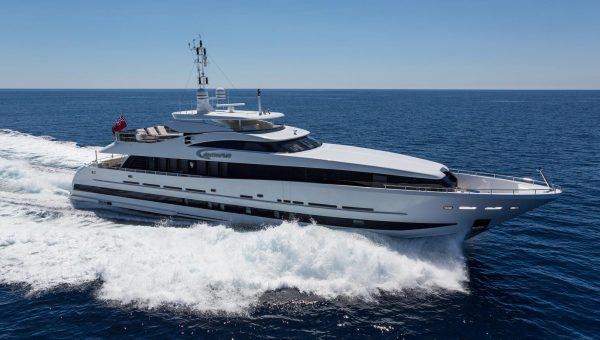
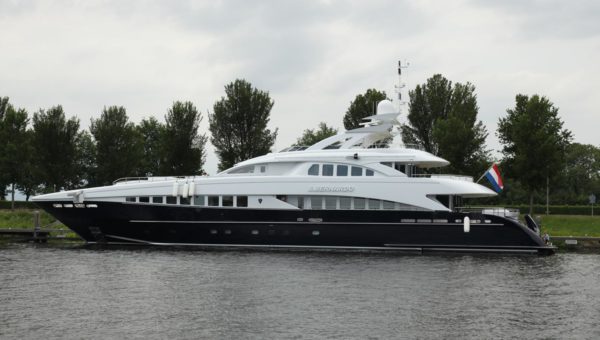
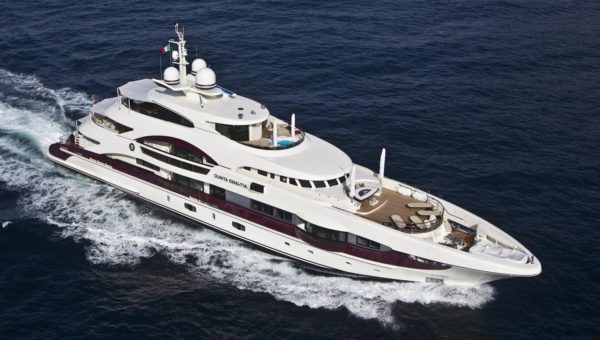
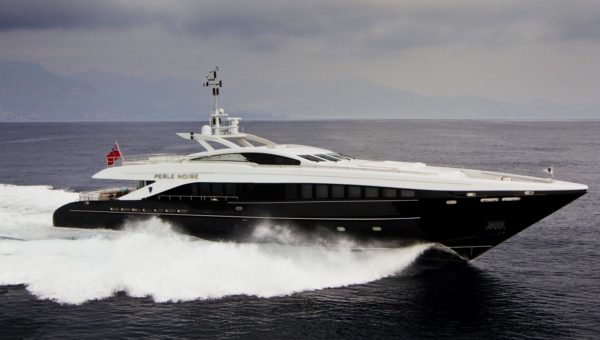
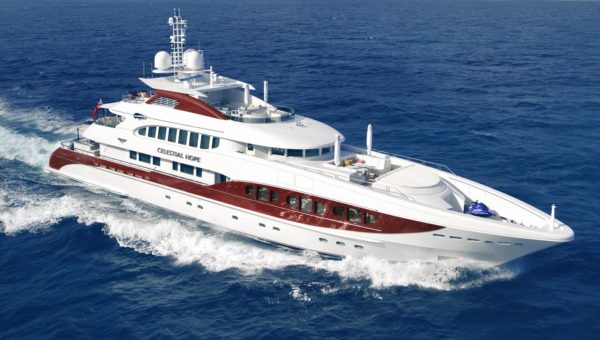
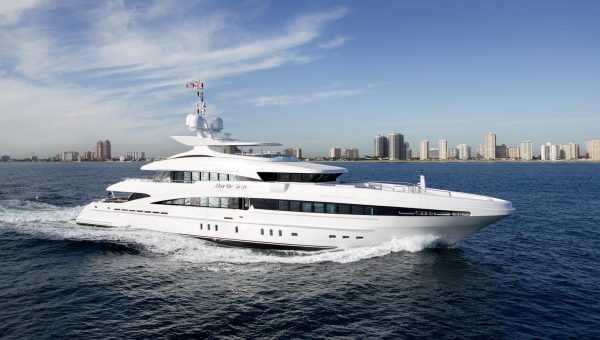
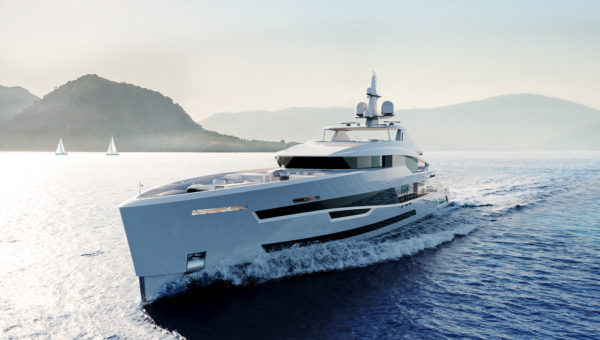
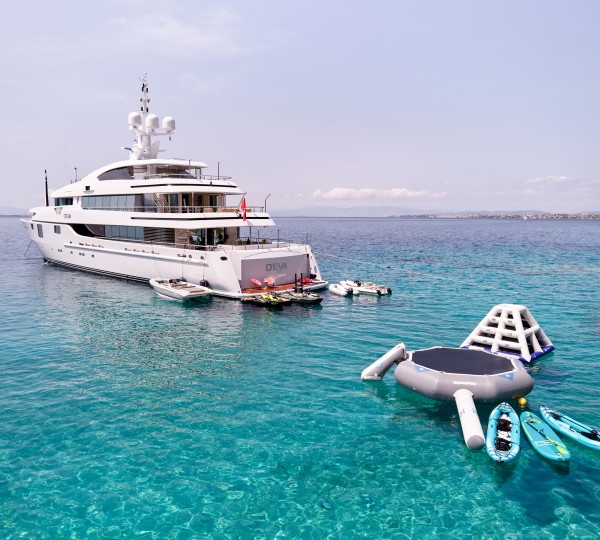
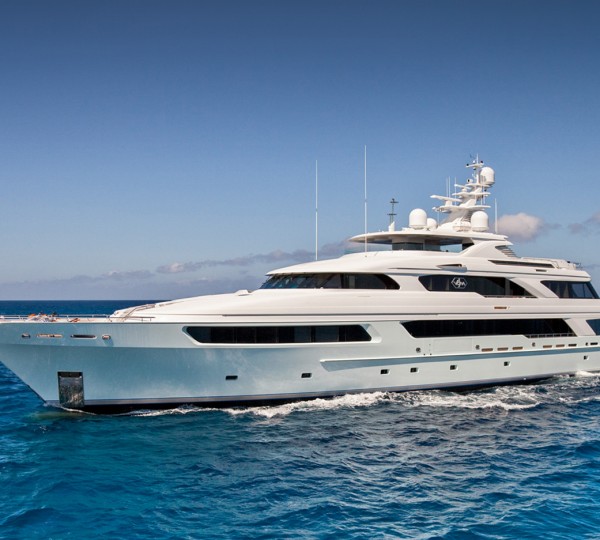

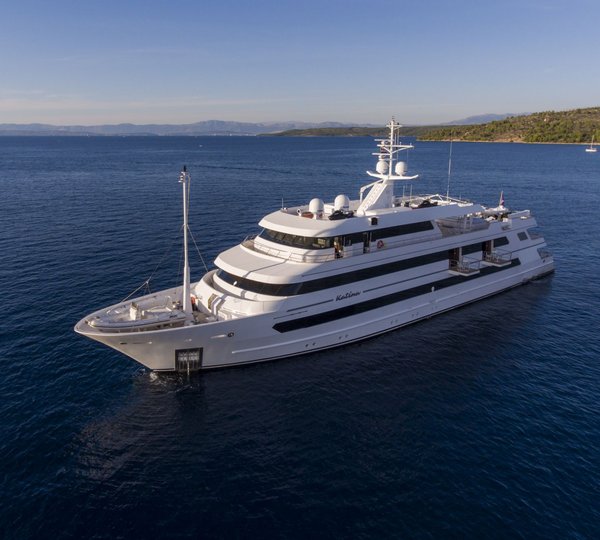
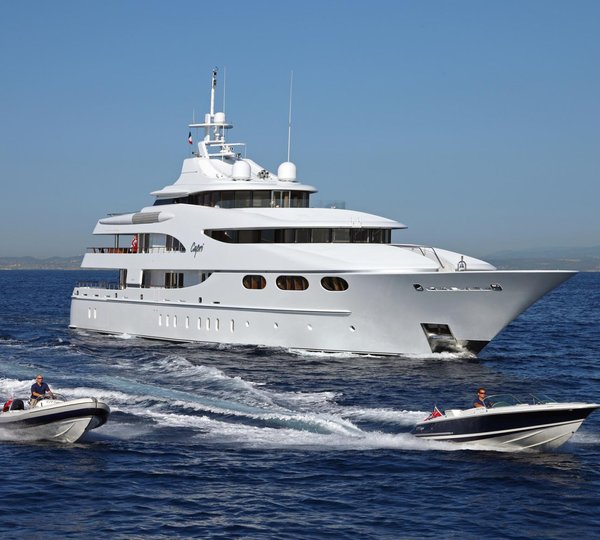
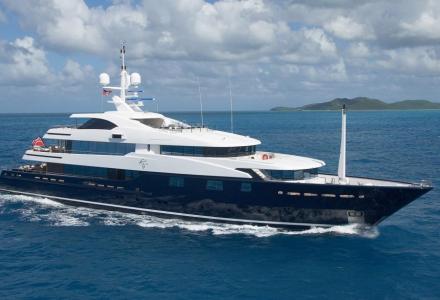
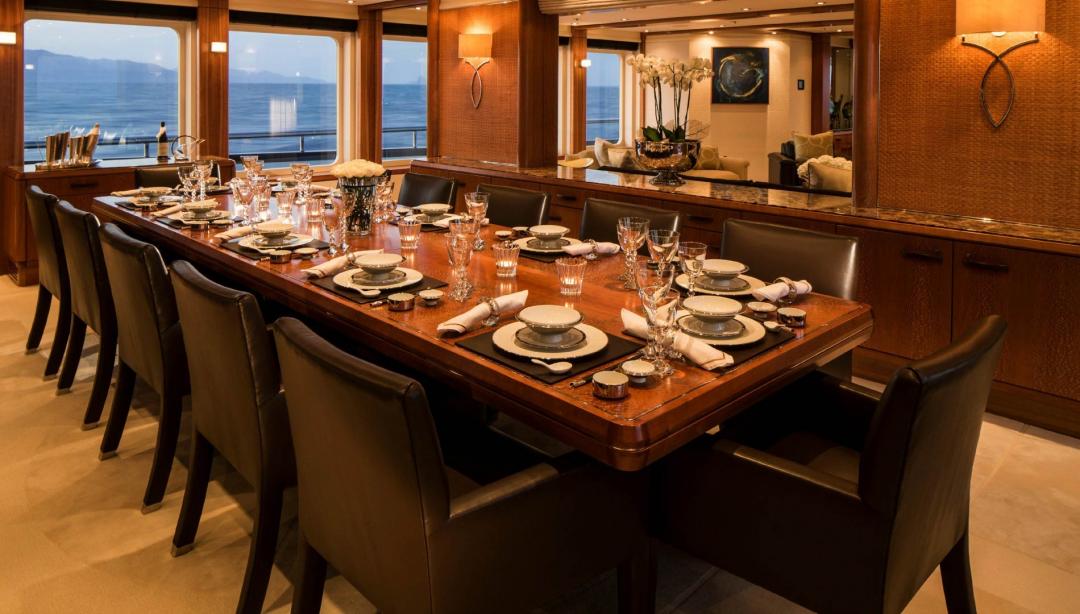


















































COMMENTS
The yacht ROCKET was built by Heesen Yachts in 2011 under the name Ice Angel, with a design by Omega Architects. The yacht was later renamed ROCKET and has since become a symbol of luxury and elegance on the seas. Specifications. ROCKET is powered by MTU engines, which enable the yacht to reach a maximum speed of 23 knots and a cruising speed ...
Fleet Search. Length 49.8m. Year2011. ROCKET. 2011. |. Motor Yacht. Ice Angel belongs to the Heesen's 50-metre semi-displacement all-aluminium series. Sophisticated naval architecture, combined with Heesen's weight reduction expertise and a pair of 2.720kW MTU engines have combined to create a yacht with a range of 3.200nm and top flight ...
The Heesen 50 metre Ice Angel Yacht. Yacht Ice Angel is the 2nd hull to be launched in the Heesen 50 series, including her sister ship, " Satori " - which was also launched and delivered earlier in 2011. Motor yachts Man of Steel and SKY are also this length. Unlike motor yacht Satori, however, Ice Angel she features a striking black and ...
The luxury motor yacht ROCKET is a private yacht and is not available to charter. ROCKET, previously named ICE ANGEL, was built by Heesen and delivered to her owner in 2011, she later underwent a refit in 2021. ROCKET can accommodate 12 guests in 6 cabins consisting of a primary suite with a king size bed and en-suite bathroom facilities, a ...
Hessen has finished working on their latest luxury creation, the Ice Angel superyacht. The Dutch superyacht builder created this vessel to be part of their 50-meter yacht line. This is one of the very few 50-meter yachts to have a gross tonnage of less than 500 GT. While still under construction, Ice Angel was simply referred to as hull 15850.
The 49.8m/163'5" 'Rocket' (ex. Ice Angel) motor yacht built by the Dutch shipyard Heesen is available for charter for up to 12 guests in 6 cabins. This yacht features interior styling by Dutch designer Omega Architects. Motor yacht Rocket boasts a wealth of convivial spaces, perfect for luxury yacht charters with families of friends, offering ample opportunities to kick back and relax, or ...
ROCKET. Motor yacht ROCKET (ex Ice Angel) is a 50m (163') all-aluminum hull 15850, built by the Dutch shipyard Heesen Yachts and launched in 2011. Powerful, elegant and fast superyacht ROCKET is designed by Omega Architects with sophisticated in-house Naval Architecture and interior as a result of Omega and Domus Nova partnership.
Interior: Sinot Yacht Architecture and Design View Yacht . Book Ends 50 ... Ice Angel 50 Metres - 2011. ... Interior: Owner Man of Steel 50 Metres - 2008. View More. steel | Displacement ...
By Oliver Pearson 8 June 2016. Possibly due to new ownership, the superyacht previously known as Cloud 9 is now named the 60m/197ft motor yacht 'Ice Angel'. Though undertaking a change of identity, there's no question she maintains an enviable character. Originally delivered from CMN shipyard in 2009 before being refit in 2013, the newly ...
Winner of Showboats Design Awards - 2010 in two categories at once, the 60-meter Ice Angel, formerly known as Cloud 9 among others, can be mistaken for another, larger and fresher Cloud 9 - from CRN, at 74 meters.«Ice Angel», whose «sister» is Slipstream, could be called a direct successor to the 58-meter Netanya 8.. Exterior and Interior Design. The dark blue hull contrasts with the white ...
Luxury yacht O'EVA (Ex Ice Angel, C9, Cloud 9) is the beginning of a new range of steel displacement motor yachts by CMN, the Line 60 - 60.00m (196' 10"). It has been created by CMN (Constructions Mecaniques de Normandie) in collaboration with the celebrated yacht designer Andrew Winch. O'EVA was one of the significant yachts launched in 2009 ...
Ice Angel is a 60 m / 196′11″ luxury motor yacht. She was built by CMN in 2009. With a beam of 11.2 m and a draft of 3.5 m, she has a steel hull and aluminium superstructure. This adds up to a gross tonnage of 1076 tons. She is powered by Caterpillar engines of 2200 hp each giving her a maximum speed of 18 knots and a cruising speed of 14 knots. The motor yacht can accommodate 14 guests in ...
The Manx-flagged Ice Angel was sailing off the southern coast of Greenland in September 2018, with 15 crew and four passengers onboard, when it struck an uncharted rock. The yacht suffered extensive damage, including a flooded bow thruster compartment, seawater ingress into accommodation and the engineroom, and cracks in the hull.
The superyacht shares the same hull lines as her sister ships Netanya 8 (not a charter yacht) and Slipstream, however, the yacht features a unique custom interior, as well as styling changes to the superstructure. HOW TO BOOK YOUR YACHT CHARTER. In conclusion, book motor yacht ICE ANGEL for your own private luxury yacht charter vacation today.
Ice Angel - aground on the uncharted rock pinnacle. On the 7th September 2018, the Isle of Man yacht "Ice Angel" departed the anchorage of Nanortalik, southern Greenland, on a day sailing via inland waters to observe and photograph the region. On-board were 15 crew and 4 guests.
ICE ANGEL, previously named C9, was built by CMN Yachts and delivered to her owner in 2009. ICE ANGEL can accommodate 12 guests in 6 cabins consisting of a primary suite with a king size bed and en-suite bathroom facilities, a cabin with a double bed and en-suite bathroom facilities, a cabin with a twin bed and en-suite bathroom facilities, a ...
The current position of ICE ANGEL is in Aegean Sea with coordinates 37.96174° / 23.57540° as reported on 2023-03-28 15:10 by AIS to our vessel tracker app. The vessel's current speed is 0 Knots and is currently inside the port of PERAMA.. The vessel ICE ANGEL (IMO: 9444572, MMSI: 235068579) is a Yacht that was built in 2009 ( 15 years old ).It's sailing under the flag of [GB] United Kingdom.
O'EVA is a 60m luxury motor super yacht available for charter built in 2009, refitted in 2023. Charter up to 12 guests in 8 cabins (1 Master, 1 VIP, 1 Single, 4 Double & 2 Twin) with a crew of 15. ... Update your yacht. Yacht Owner, Captain or Central Agents - Send us latest Photos, Charter Rates or Corrections Send Updates.
Ice Bear, the 52-meter yacht that belonged to the late billionaire businessman Walter Scott Jr., will be sold to the highest bidder in October. The online auction will commence on Oct. 10 via ...
Kanto, Vladimir: See unbiased reviews of Kanto, rated 5.0 of 5 on Tripadvisor and ranked #207 of 278 restaurants in Vladimir.
Golden Ring is the modern name given to a series of magnificent villages and towns that are situated in a circle northeast of Moscow. Founded before Moscow in the 7th century to 12th century, these places form the heartland of Russia and are known for the churches (some with golden domes), monasteries, wooden kremlin (city forts), museums and ...
Russia Beyond. Legion Media. Picturesque churches, golden domes, ancient history, nature, and tasty Russian food - we've brought together all you need about the famous tourist route not far ...
The administrative center of Vladimir Oblast, it is one of the largest tourist centers in the European part of Russia, included in the tourist route "The Golden Ring of Russia". The population of Vladimir is about 348,700 (2022), the area - 137 sq. km. The phone code - +7 4922, the postal codes - 600000-600903.